From ancient temples and time-honoured art forms to cutting-edge art installations, my journey through Ishikawa Prefecture of Japan was a harmonious blend of the old and new.
Every corner of Ishikawa whispered stories of the past while eagerly embracing the future amidst landscapes that spoke of a deep, inherent respect for the land. As I traversed from the Noto down to Kaga City, I was deeply touched by the profound kindness and respect of the Japanese people.
This respect is a reflection of ‘Shinto‘, a term I learned to appreciate deeply. Shinto, or ‘the way of the gods’, is a way of life that emphasizes harmony with nature and the spirits residing in it. This trip was not just about sightseeing; it was an eye-opening experience into the spirit of Japanese hospitality, tradition, and innovation, deeply rooted in Shinto principles. In Ishikawa, I saw a community living by rules not just set in law, but etched in the heart, a testament to the collective respect for their land and heritage.
Everywhere I looked, the streets were pristine without a speck of garbage, and the public restrooms maintained an exceptional standard of cleanliness. A serene calm pervaded the air, free from the blare of honking horns or the clamour of loud phone conversations. It was a place where warm smiles, friendly waves of hello and goodbye, were the norm. This is the civility I long for and miss dearly.
About Ishikawa Prefecture:
Ishikawa Prefecture, located in the Chūbu region of Honshu Island, Japan, presents a fascinating culture, history, and natural beauty. With a population of approximately 1.2 million, it spans a geographic area of 4,186 km². Ishikawa is defined by its stunning natural landscapes, situated between the Sea of Japan and the peaks surrounding Mt. Hakusan, offering both sublime ocean views and impressive mountain vistas. It boasts a bountiful nature and a robust city life within driving distance. This part of Japan is also known for the best sushi as voted by the population of Japan!
My visit to this beautiful part of the country allowed me to experience Noto Peninsula, Kanazawa, Kaga and Hakusan, traversing the entire area.
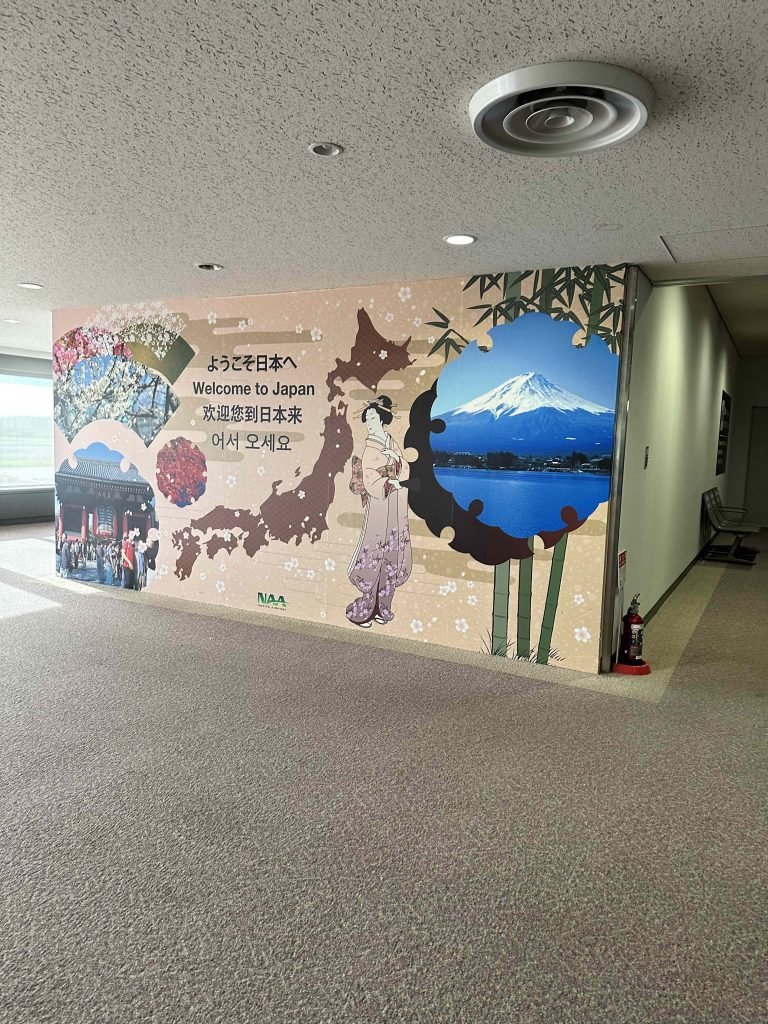
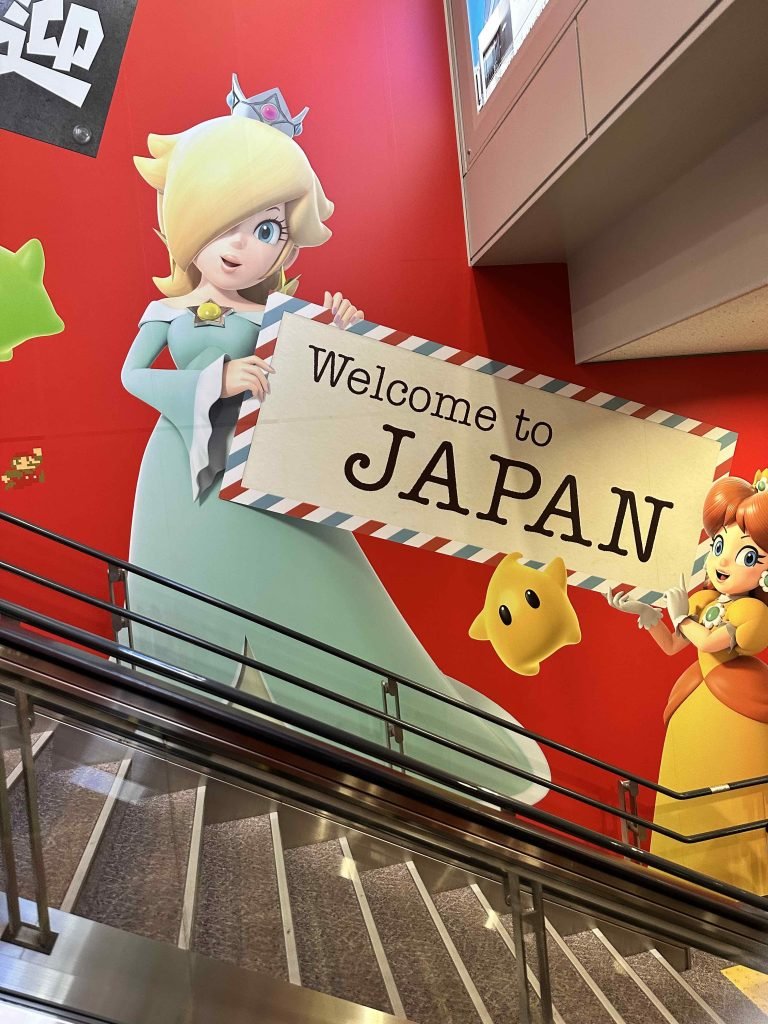
Highlights:
Ishikawa is also celebrated for its rich arts and crafts heritage. It is the birthplace of unique cultural traditions and crafts, such as:
- The art of Noh, which was introduced and refined into the style of Kaga hosho.
- The tea ceremony, introduced in 1666, contributing significantly to Japanese tea culture.
- Kutani ware, known for its bright colored glaze.
- Ohi teaware, unique pottery to Kanazawa.
- Nyotaimori or naked sushi, said to have originated here.
- Kaga silk, known for its complicated silk print technique.
- Kanazawa lacquerware, noted for its high quality and traditional gold dust decoration.
- Kanazawa gold leaf, produced using a technique that creates wafer-thin sheets.
- Kaga mizuhiki, a decoration made from glued Japanese paper.
- Kaga inlay crafts, combining thin flat and thread metal inlays.
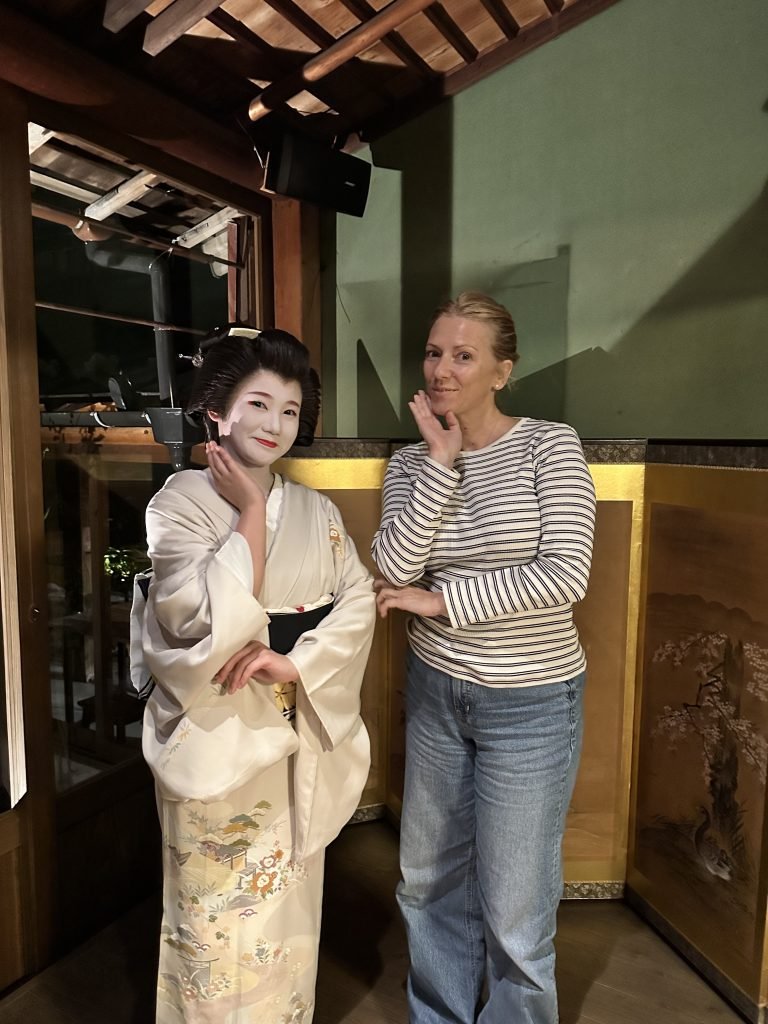

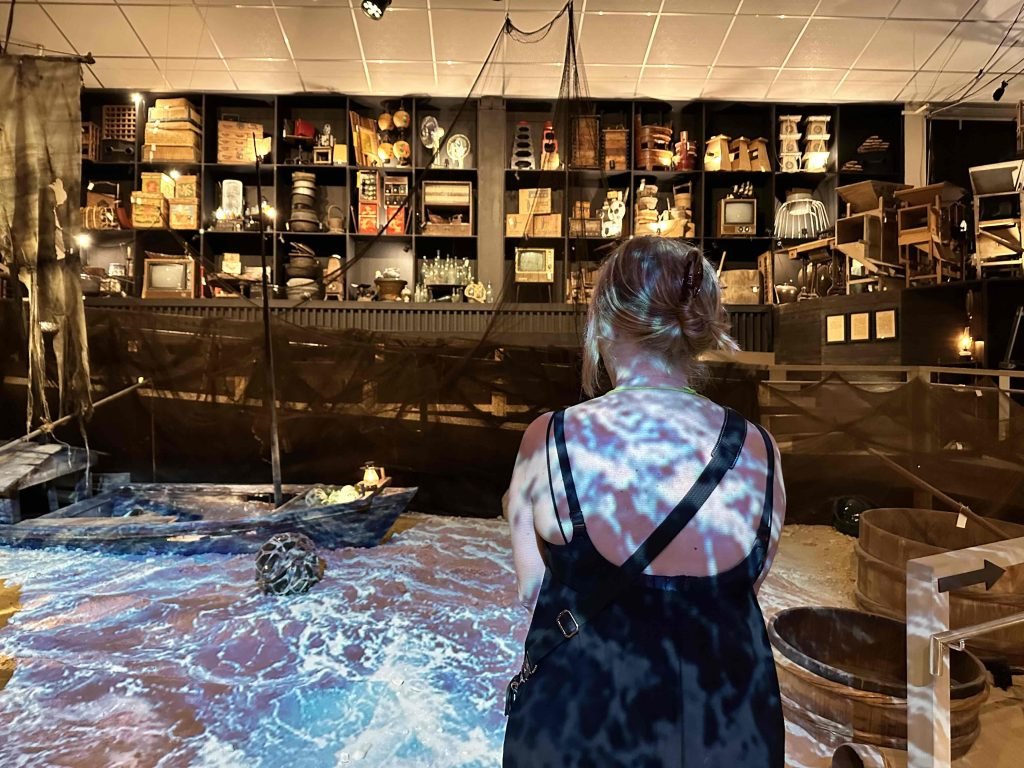
Overview:
Ishikawa Prefecture is a captivating fusion of cultural heritage, remarkable culinary traditions, stunning natural landscapes, and a dynamic arts scene. It’s uniquely positioned where warm and cold currents meet along the Sea of Japan, enriching it with a diverse array of seafood that anchors its culinary identity. Traditional Kaga-ryori, exemplified in kaiseki meals, highlights local delicacies such as jibu-ni, a flavorful duck and vegetable stew. The culinary scene is deeply integrated with regional customs, as seen in the use of Kutani ware ceramics and Kaga-yuzen kimonos in dining settings.
The region’s gastronomic offerings extend to seasonal seafood like snow crab, sweet shrimp, and pufferfish, complemented by fertile lands producing quality vegetables and the renowned Noto beef. Historical markets, including the age-old Omicho and Wajima Morning Markets, are not just centres of commerce but also vibrant expressions of Ishikawa’s commitment to nature and tradition.
Art enthusiasts will find the Ishikawa Prefectural Museum of Art an essential stop, with its rich collection of both contemporary and traditional Japanese works. This museum is a treasure trove of the region’s artistic heritage, offering a glimpse into the creativity and skill of local artists. Additionally, the 21st Century Museum of Contemporary Art in Kanazawa City and the triennial Oku-Noto Triennale in the scenic Oku-Noto region celebrate contemporary art in vibrant and engaging ways.
The enchanting Higashi-Chaya district immerses visitors in the traditional world of geigi (Geisha), offering a window into the elegance of Japanese culture. The Naga-machi District, with its well-preserved samurai residences, provides a fascinating look into Japan’s historical architecture and lifestyle.
For relaxation, the Kaga hot-springs district offers tranquil onsen baths nestled in natural settings. Nature enthusiasts will be mesmerized by the scenic 1000 Rice Fields and the serene Shibayama Lagoon, ideal for birdwatching.
Historical landmarks like Kanazawa Castle and the adjacent Gyokusen-inmaru Park provide insights into Japan’s feudal past through their architecture and landscaped gardens.
In Ishikawa Prefecture, every corner unfolds a new aspect of cultural richness and scenic beauty. Ending your journey at Natadera Temple is a profound choice, offering a peaceful setting to reflect on the diverse and enriching experiences this region offers. Below is my itinerary, which I’d like to share as inspiration. I was delighted with how my trip concluded with a visit to Natadera Temple. I highly recommend you consider doing the same. It provided me with an opportunity to reflect on all of the wonderful experiences I had to date in a peaceful and meaningful setting.
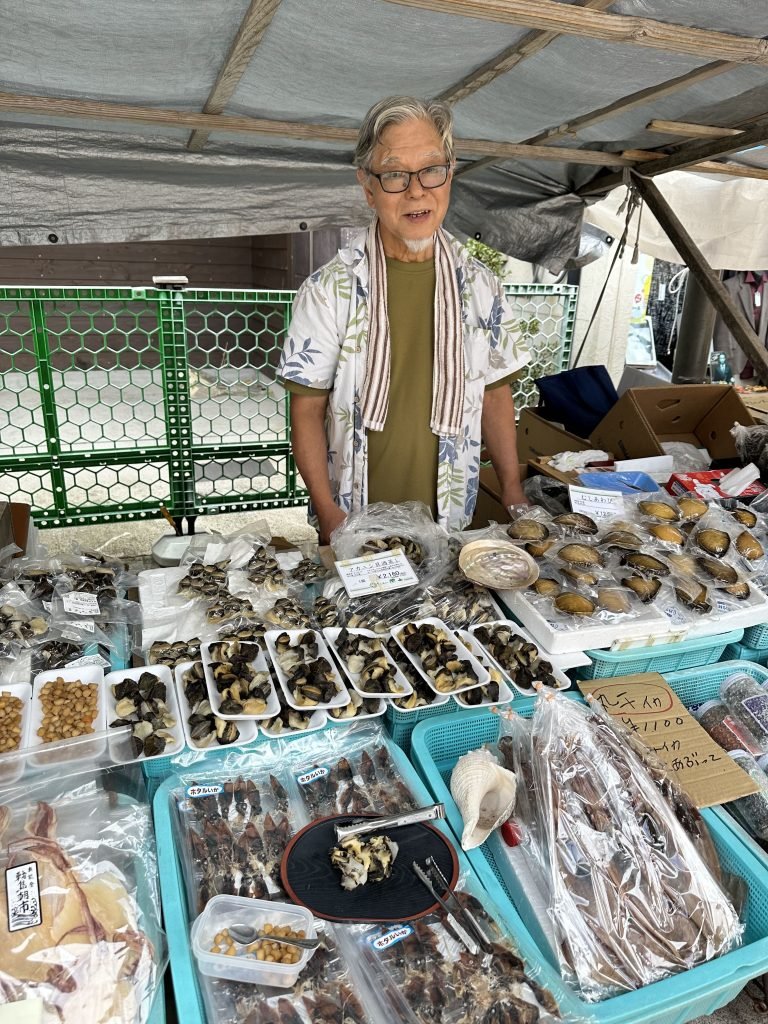
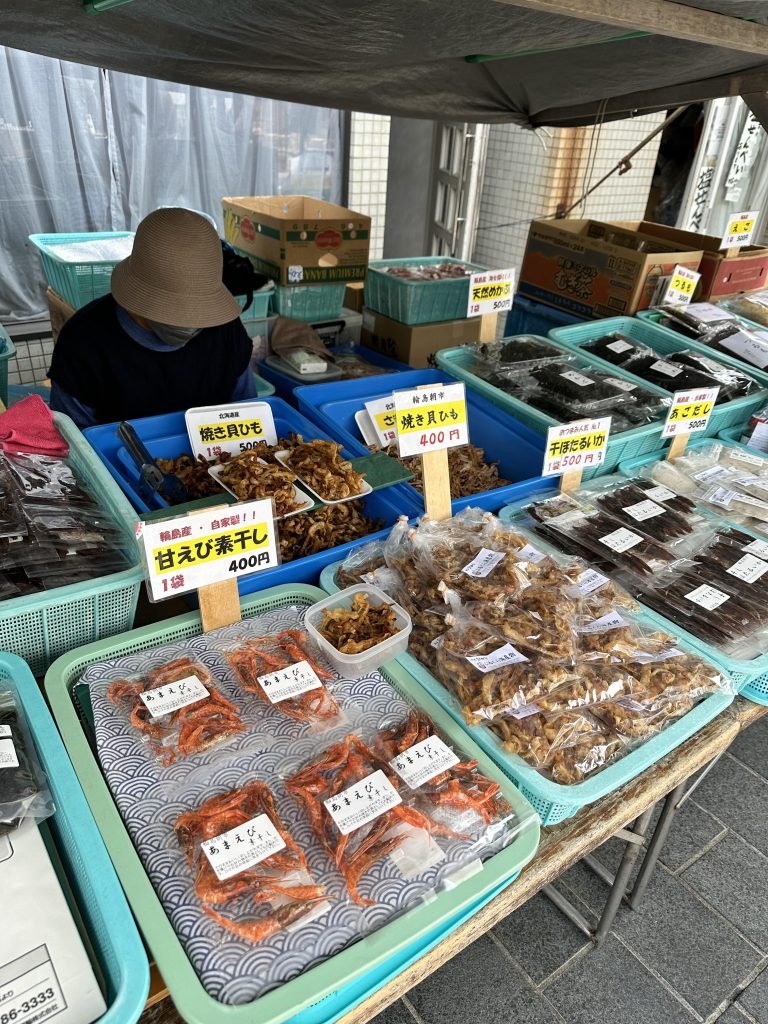
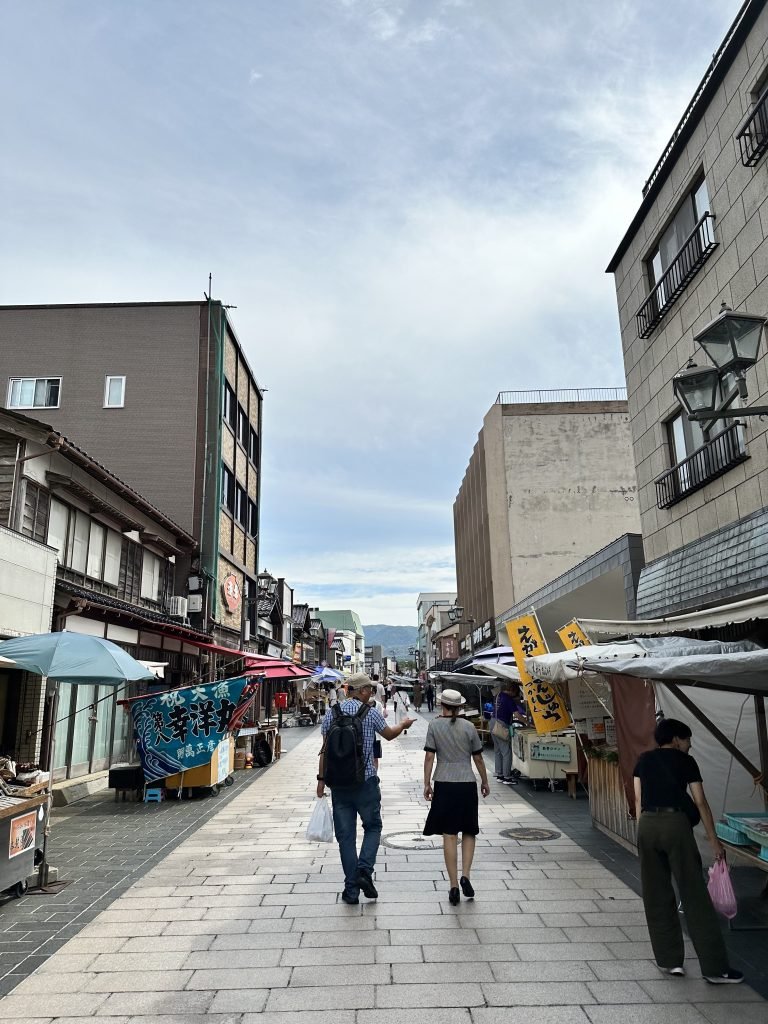
Day One: In the Heart of Noto – Wajima City, Japan
In Wajima City, the phenomenon of U-turn migration is strikingly evident. Locals who ventured out have returned, enriched with new experiences and perspectives. It was here, in 2016, that chef Ike Hata’s Michelin Star L’Atelier de NOTO brought regional culinary excellence to the fore, including the exquisite yet perilous Fugu (poisonous blowfish). This highlights the locals’ profound commitment to authentic and adventurous dining.
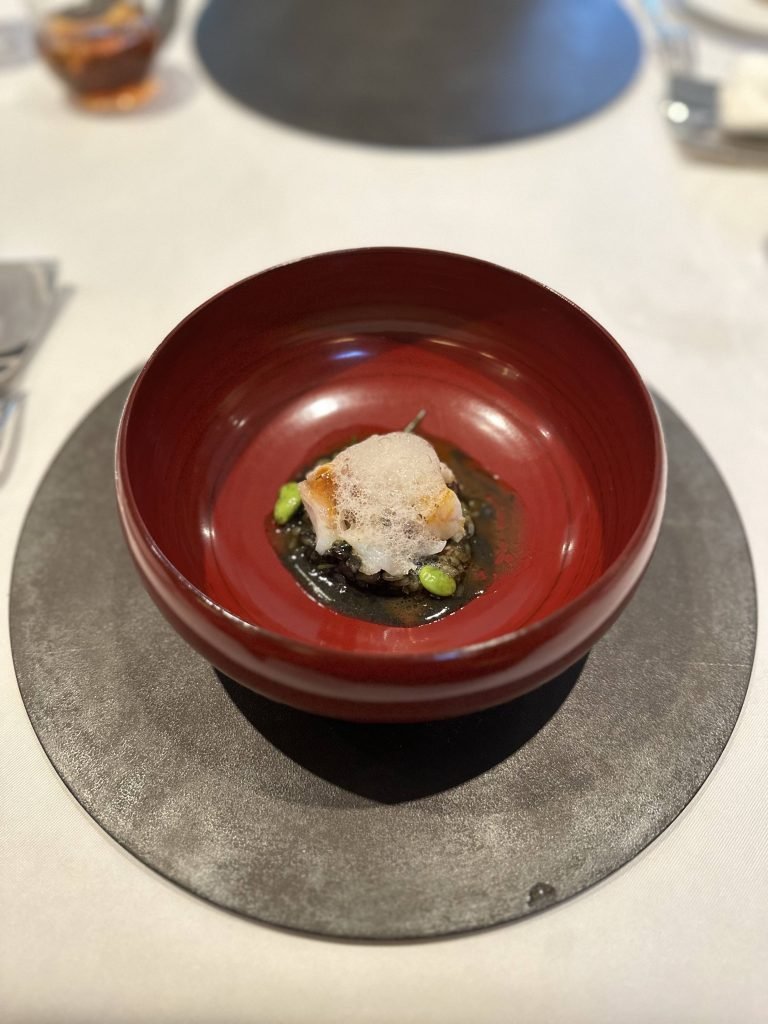
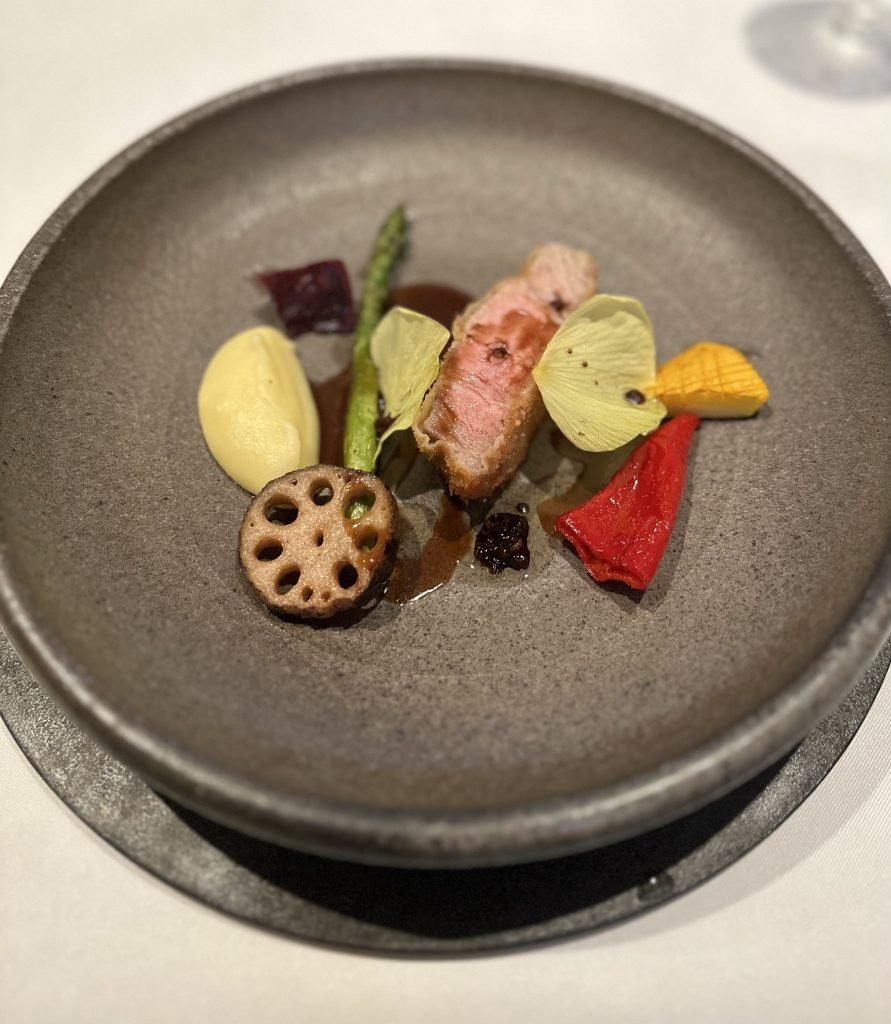
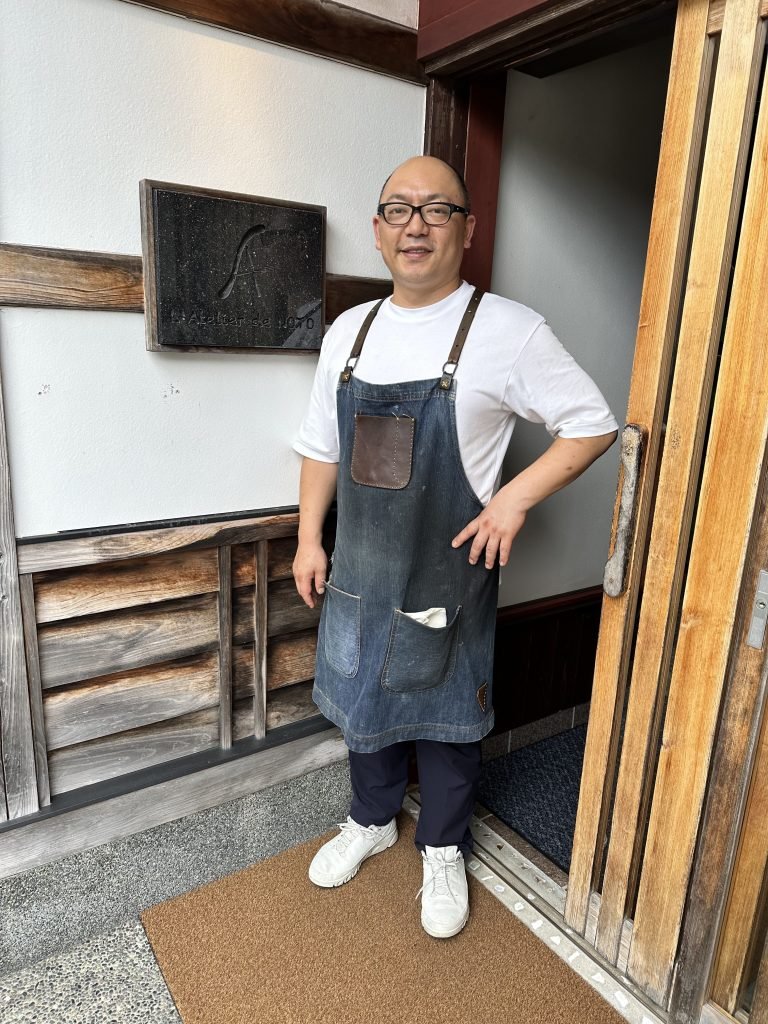
The art of lacquerware, threatened by mass production, deeply intrigued me. During a visit to a local store, I delved into the elaborate process of crafting these items. Sourced from tree sap, with each tree providing merely about 150 grams in its lifetime, the creation of lacquerware is a labour of love, often taking a year to complete. The result is a durable heirloom, often enduring for over a century and treasured across generations. Witnessing a 70-year-old piece, its allure undiminished by age, was a deeply moving experience.


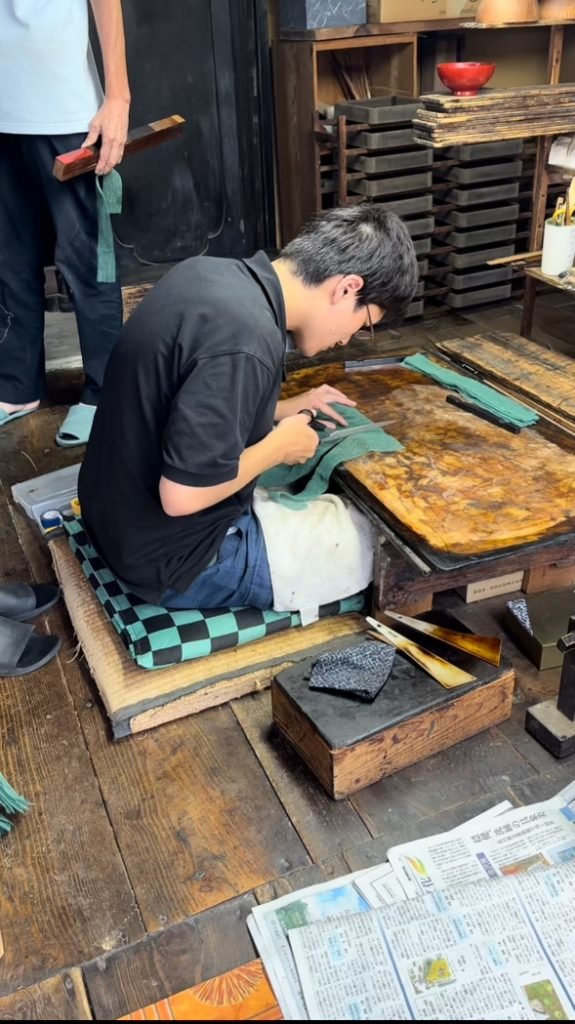
During my visit to Wajima Art Studio Nagaya, a unique cultural destination in Kawai Town, Wajima City, Ishikawa Prefecture, Japan, renowned for its gold-inlaid lacquerware, I had the wonderful opportunity to etch my name and my daughter’s name into black chopsticks (see photo), creating a cherished keepsake. Established in 2003, this site comprises five traditional-style terrace workshops that faithfully replicate the architecture of Wajima’s “Nagaya.” Wajima lacquerware, known as Wajima-nuri, stands out for its robust undercoating, achieved through layers of urushi (Japanese lacquer) mixed with powdered diatomaceous earth on zelkova wooden bases. With roots dating back over 6,800 years, this ancient craft gained prominence during the Edo period and is now celebrated as high-class artistry, with the Wajima Lacquer Art Museum as a notable tourist attraction. Visitors to Wajima Art Studio Nagaya can engage in gold-inlaid lacquerware workshops, create personalized chopsticks, explore specialized shops, and savour meals served in Wajima lacquerware.



The sprawling rice paddies, stretching as far as the eye can see, stand as a symbol of an enduring tradition. Dating back to 1865, each of the 1004 paddies is individually owned. Despite technological advancements reducing their scale, the commitment to their upkeep remains steadfast. These paddies attract volunteers from around the world, especially during the harvest season, reflecting a global appreciation of this agricultural heritage.
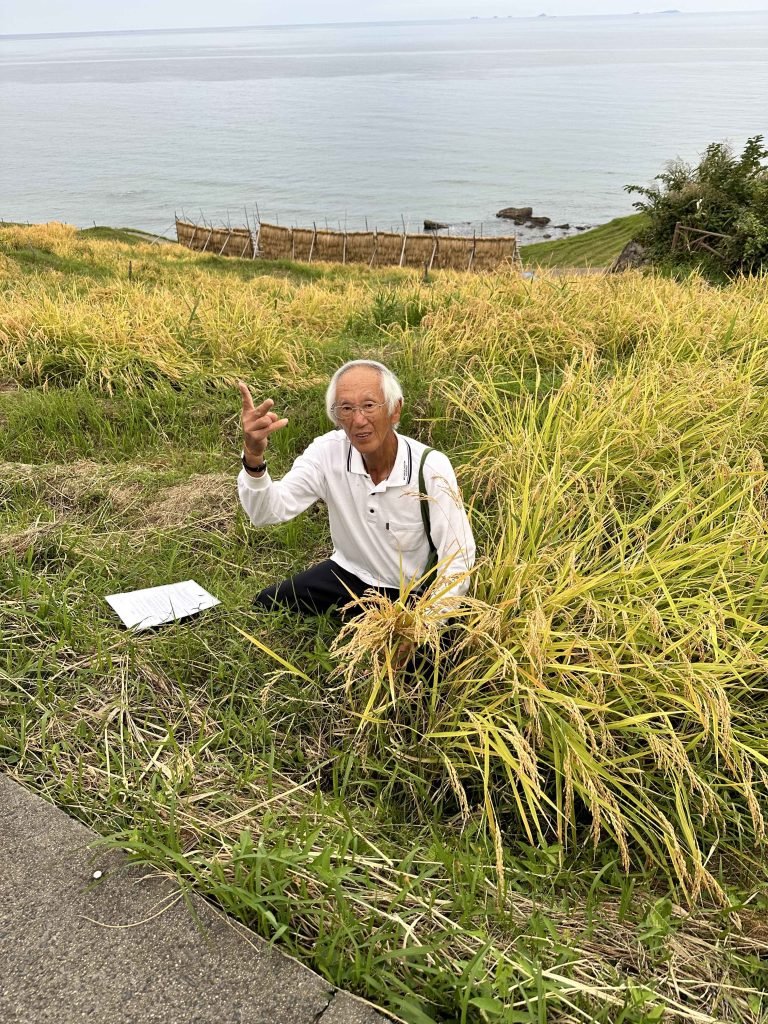
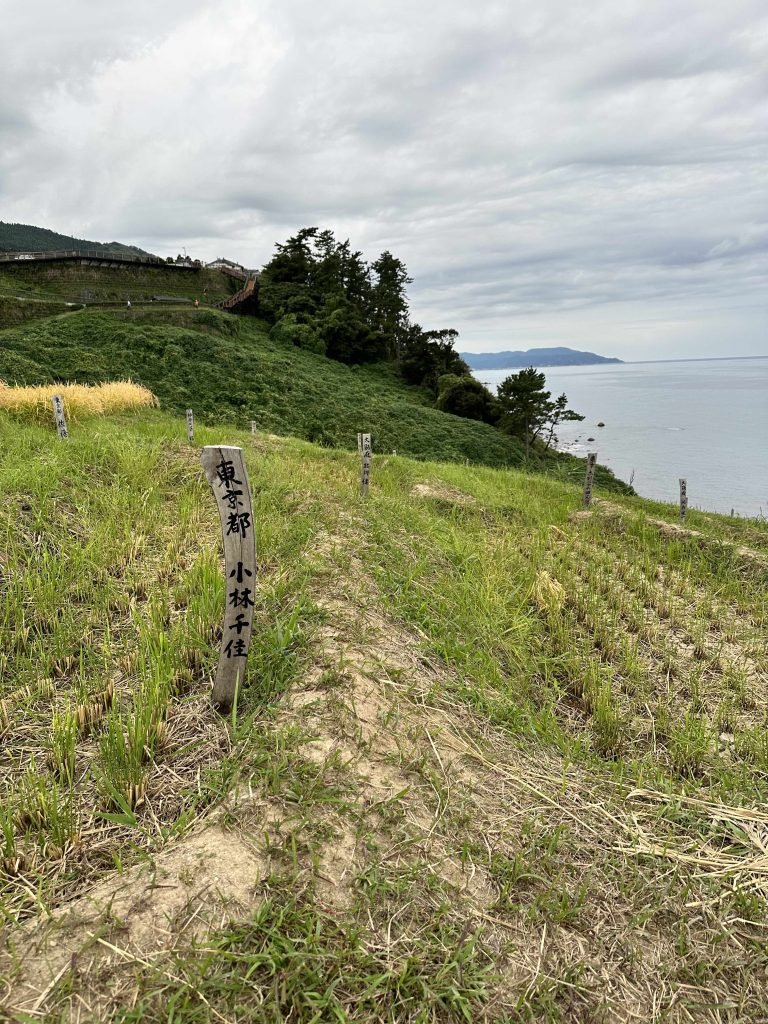
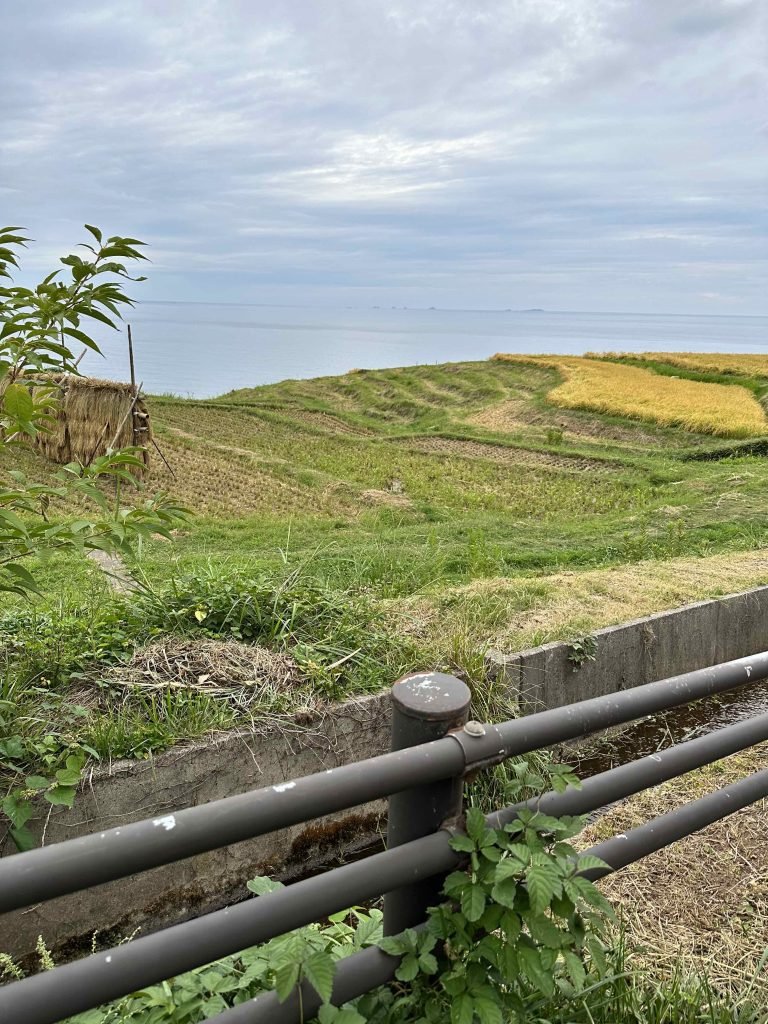
Eat:
- Traditional Japanese Breakfast at the Hotel Koshueun
- Wajima Morning Market
- L’Atelier de NOTO (Michelin Star)
Play/Chill:
- Osaki Lacquer “Urushi” (making of traditional lacquerware)
- Wajima Art Studio Nagaya (gold-inlaid)
- Shiroyone Senmaida Rice Terraces (coastal communal project)
Stay:
Hotel Koshueun – it is a traditional Japanese-style hotel called Ryokan. Ryokans offer a chance to experience traditional Japanese culture and relaxation in a tranquil and serene environment. They can be found throughout Japan, from bustling cities to remote rural areas, and they vary in terms of price and level of luxury. It is an excellent way to immerse oneself in Japanese customs and traditions. In the evening, this hotel offers a 30-minute drumming presentation by the Gojinjo Taiko Associations, with origins dating back to 1576.

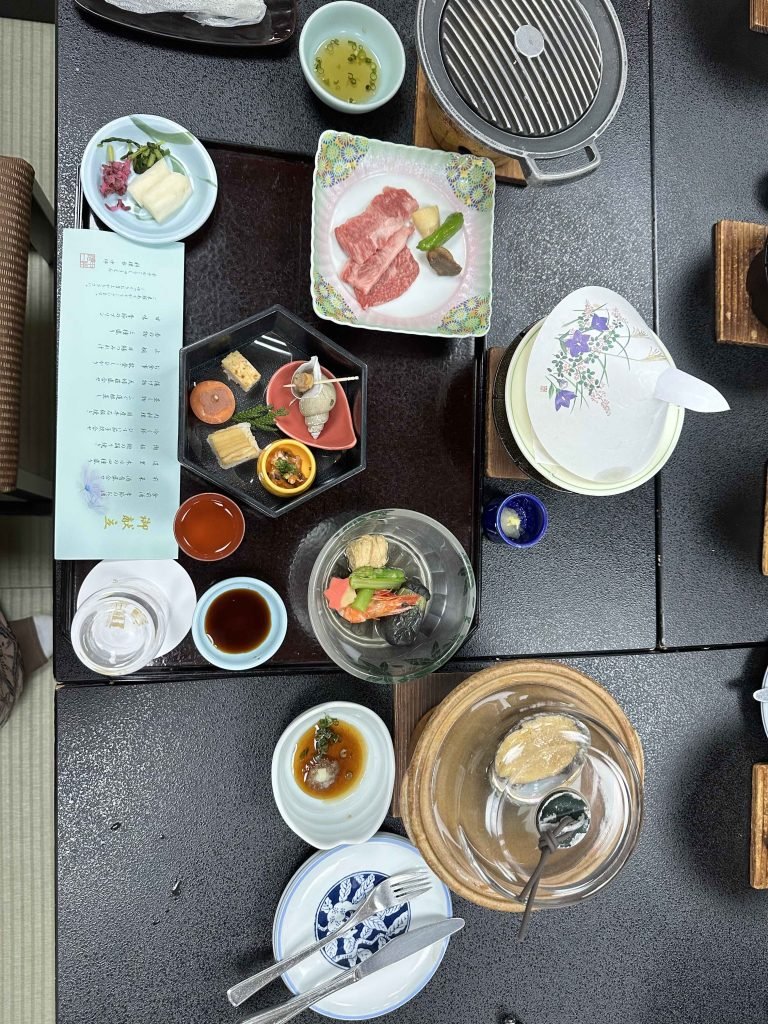

Day Two: Art and Tradition in Unison – Noto, Japan
The region emerges as a surprising center for contemporary art, harmoniously blending traditional culture with modern artistic expressions. A notable example is the 2017 installation “The Boat Which Carries Time” by Chiharu Shiota, which used 50,000 meters of red thread to symbolize international collaboration. This installation is more than just an art piece; it represents a bridge between generations and cultures. In the small town of Isuzu, facing challenges due to its aging population, the introduction of the Triennale art festival has sparked a remarkable transformation. In just five years, this festival has effectively doubled the town’s population, reflecting the profound impact of art on community revitalization. I received a warm welcome from Deputy Mayor Naoyuki Kaneda of Suzu (photo below) , who graciously introduced me to the Oku-Noto Triennale 2023. This experience was further enriched by a delightful lunch at a nearby restaurant and a visit to the adjacent gift shop, where I enjoyed some shopping.
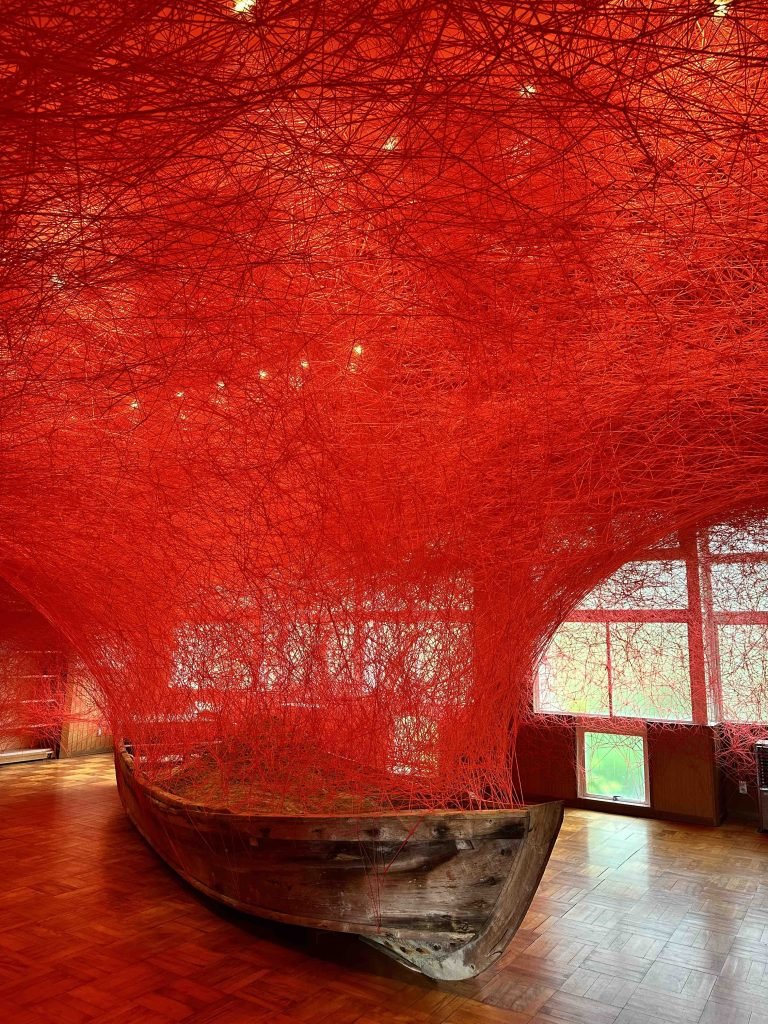
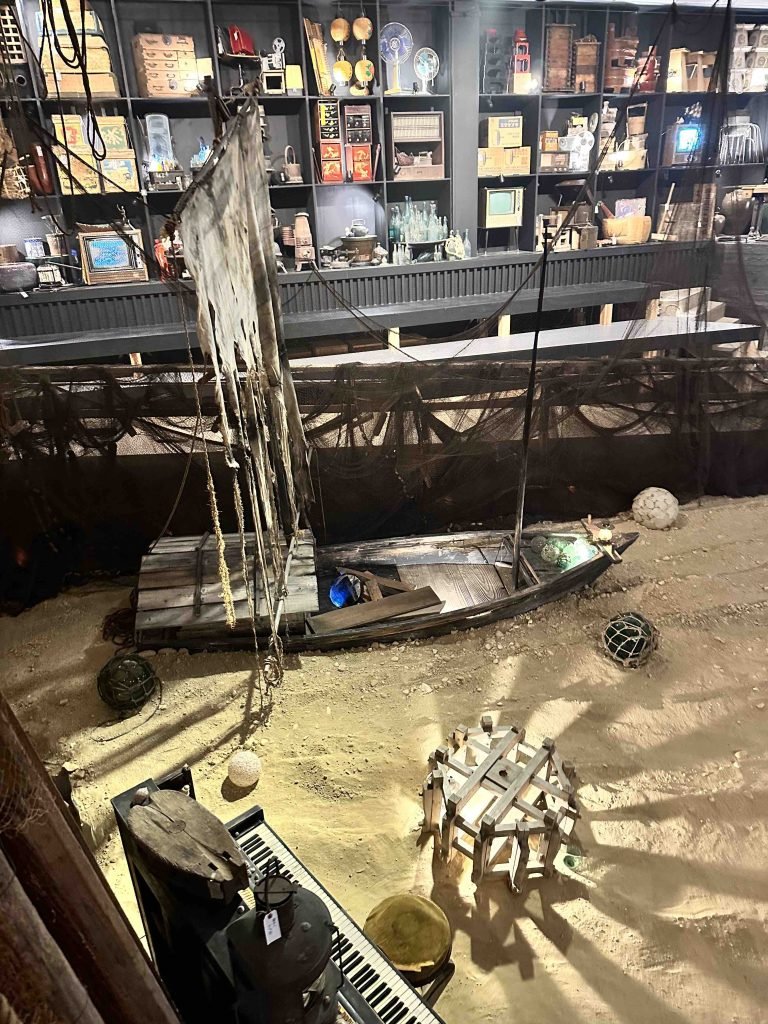
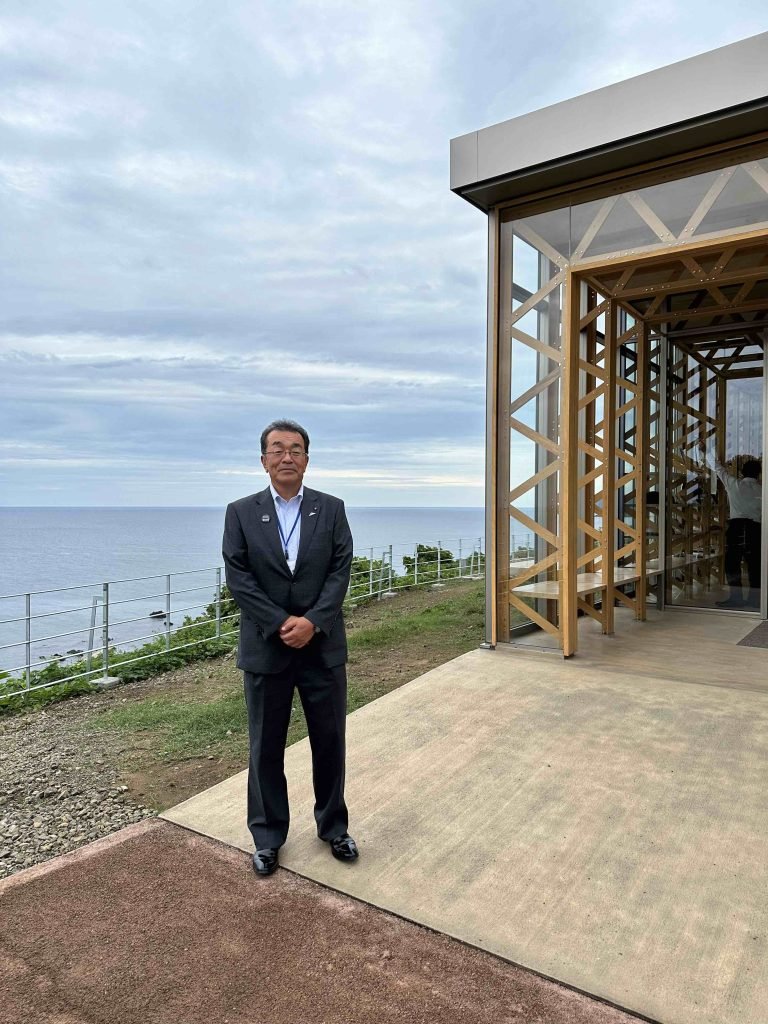
While exploring the area, a detour to Misukejima Island is a must. Here, visitors can partake in a charming local tradition: ringing the bell. This ritual, especially popular among young couples about to marry, is believed to bless them with a lasting and harmonious union.
Adjacent to these cultural landmarks is the Notojima Island Cycling Experience. Offering a tranquil bicycle journey along the Japan Sea, this route is frequented by a friendly pod of dolphins. As a personal recommendation, there’s no better way to truly connect with a destination than by exploring it on a bike. The combination of gentle exercise, fresh sea air, and stunning natural vistas creates an unforgettable experience.
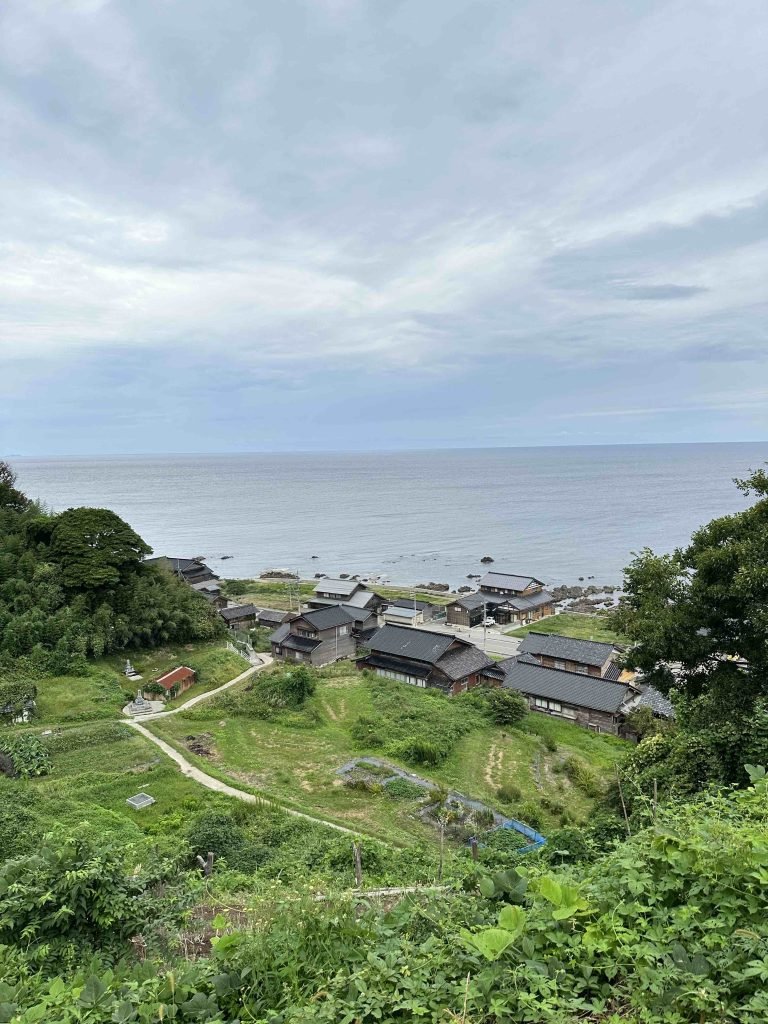
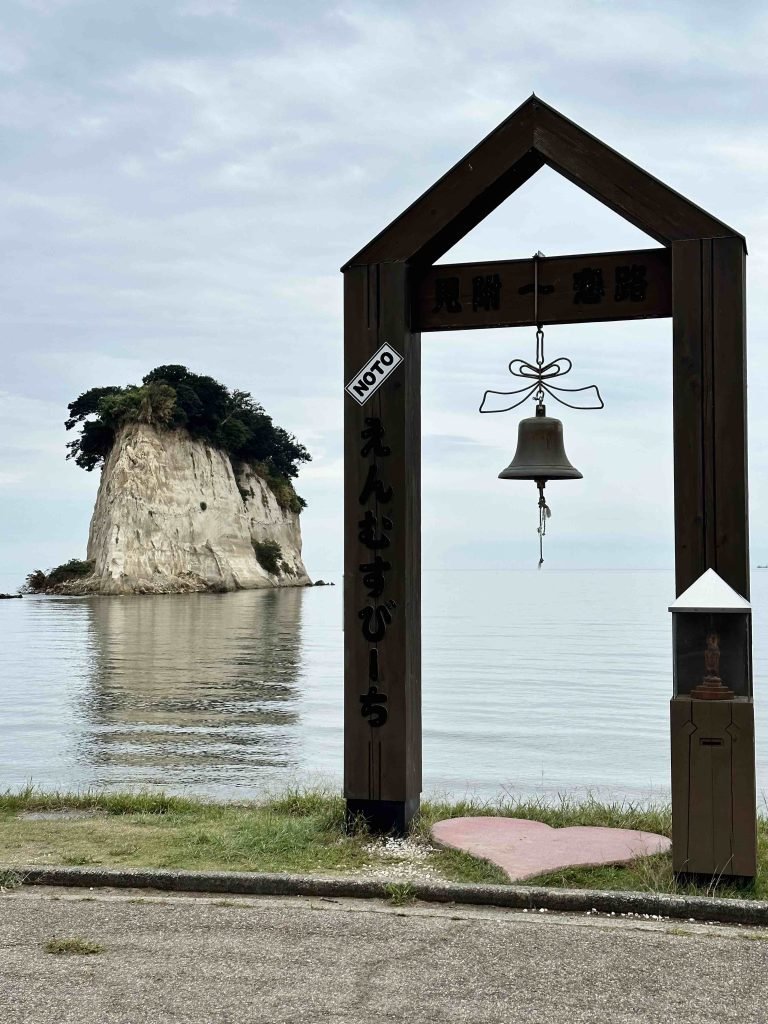
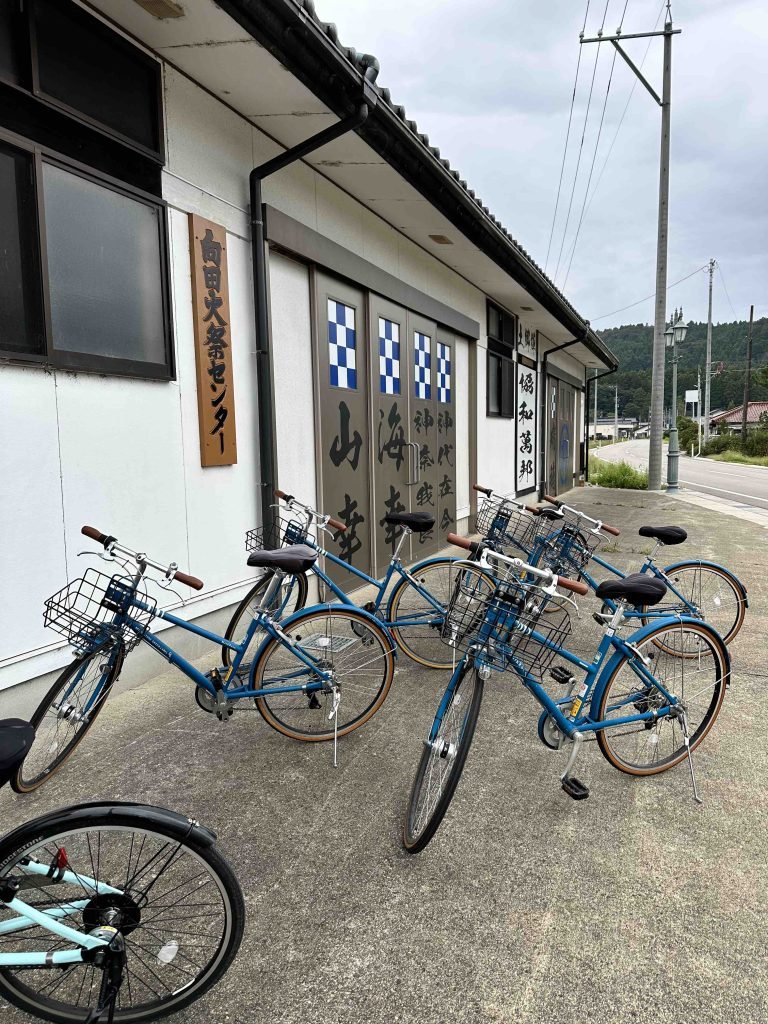
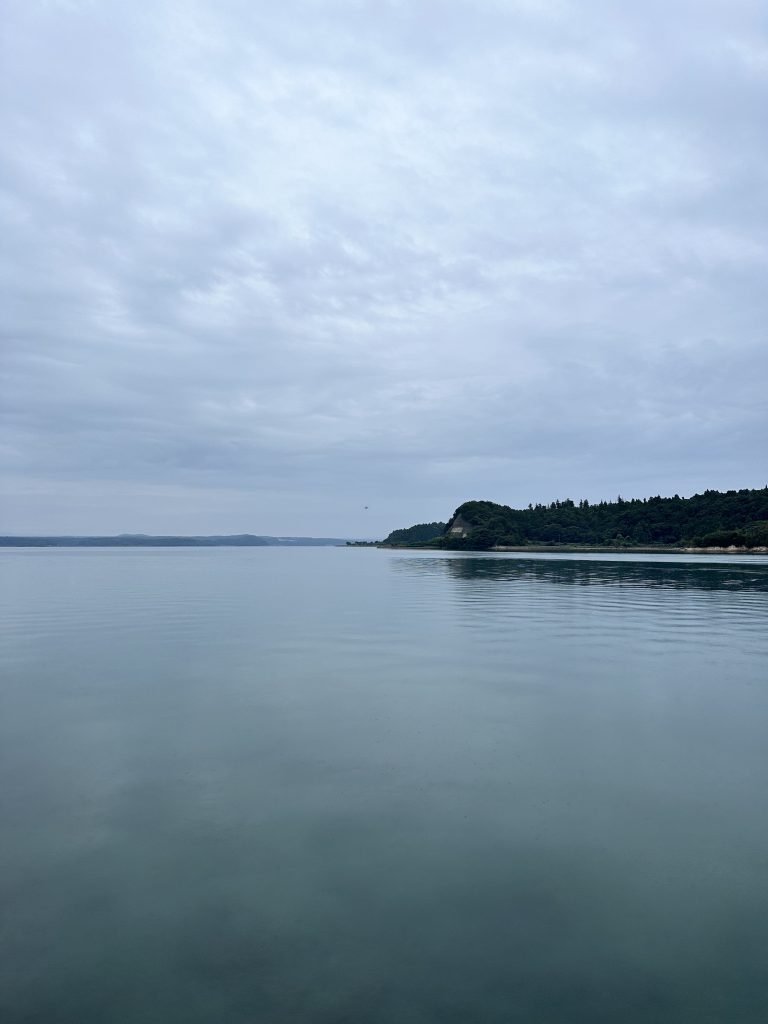
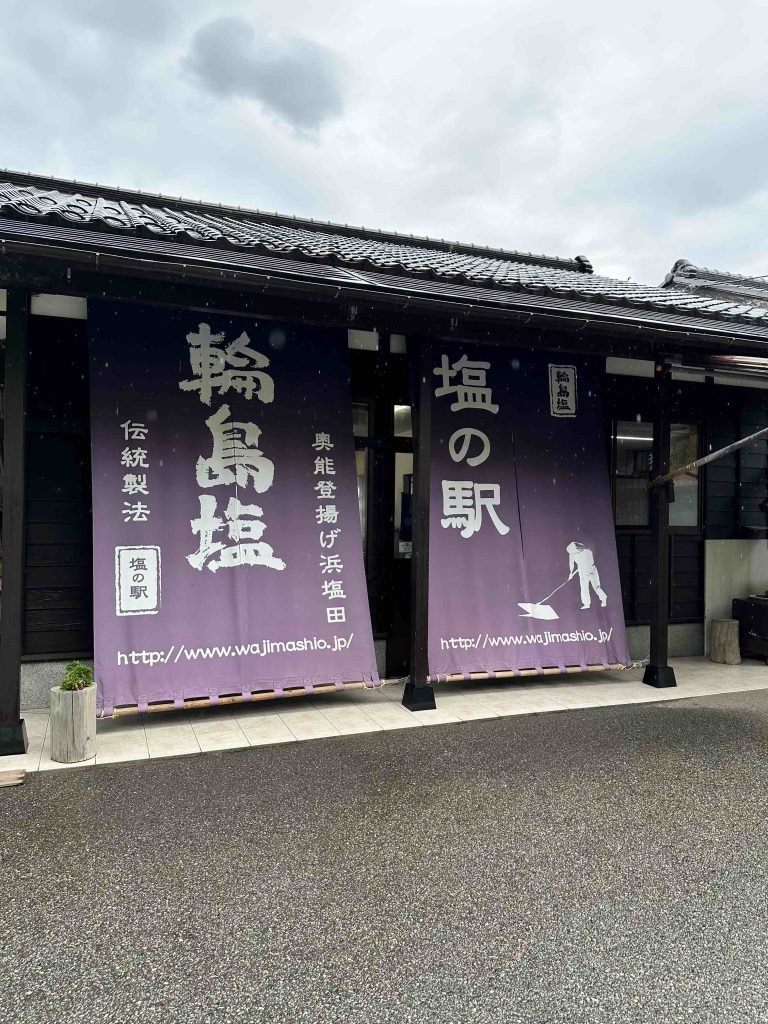
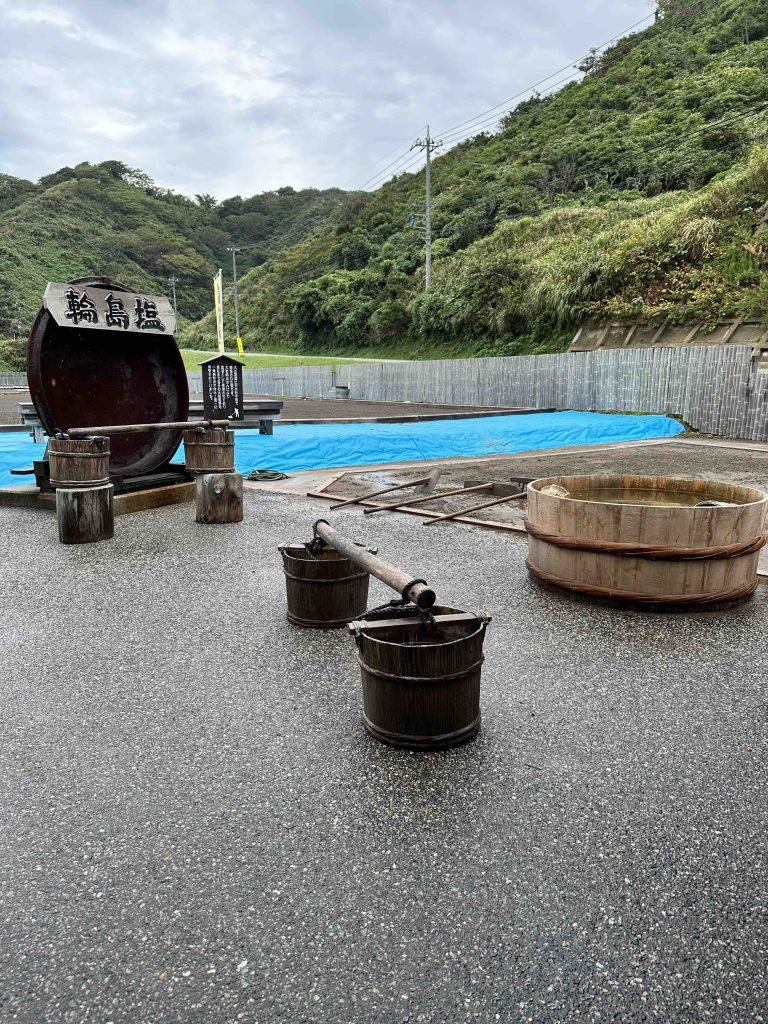
During my journey, I had the chance to engage in the traditional practice of extracting salt from seawater. Wajimashio refers to a traditional sea salt production method from the Japan Sea shore, utilizing the Agehama style. This 500-year-old technique is particularly noted for being labour-intensive and unique. It involves carrying seawater to a salt field, spreading it across the field, and allowing it to evaporate under the sand until salt crystallizes on the surface. This ancestral method is still preserved in Japan, specifically on the Noto Peninsula, known for producing high-quality salt from what is considered some of the purest sea waters in Japan. Visitors to Wajima Shio can experience this process firsthand, learning from salt workers (Hamashi) and even trying their hand at various stages of salt production
Eat:
- Otanimachi – Suzu (insert English name of the restaurant at Oku-Noto Triennale 2023)
- Traditional Japanese dinner at the hotel.
Play/Chill:
- Rice production at Wajimashio uses a 500-year-old method that harvests salt from seawater.
- Take a few minutes to visit Misukejima Island and ring the bell.
- Notojima Island Cycling Experience: A serene bicycle ride along the Japan Sea.
Stay:
Tadaya Ryokan – Founded in 1885, Tadaya offers a serene retreat on the fringe of the Wakura Onsen region, akin to a hidden sanctuary. Initially established in the heart of the town, Tadaya was relocated in 1973 to its present site, chosen specifically for its stunning, uninterrupted views of the tranquil Nanao Bay.
Tadaya provides an ideal escape from the frenetic pace of city life, inviting guests to immerse themselves in the peaceful ambiance of Nanao Bay, which unfolds right before their eyes. Embracing tradition, guests are encouraged to wear the provided Yukata, a light cotton kimono, throughout their stay in the hotel, enhancing the experience of relaxation and cultural immersion
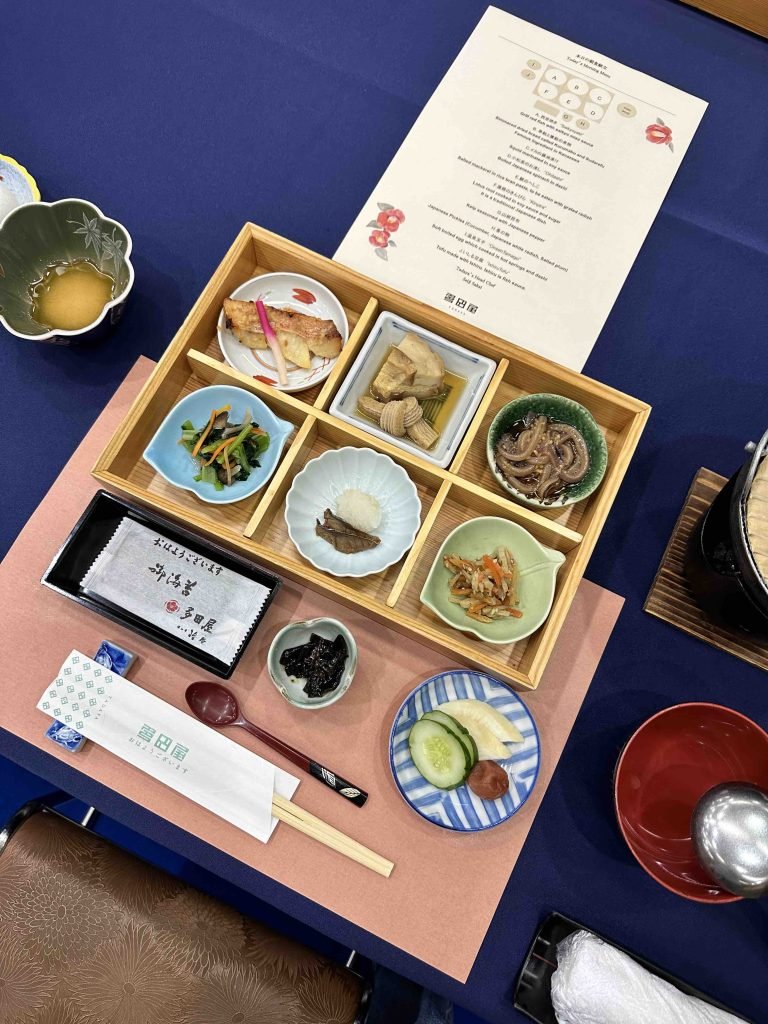
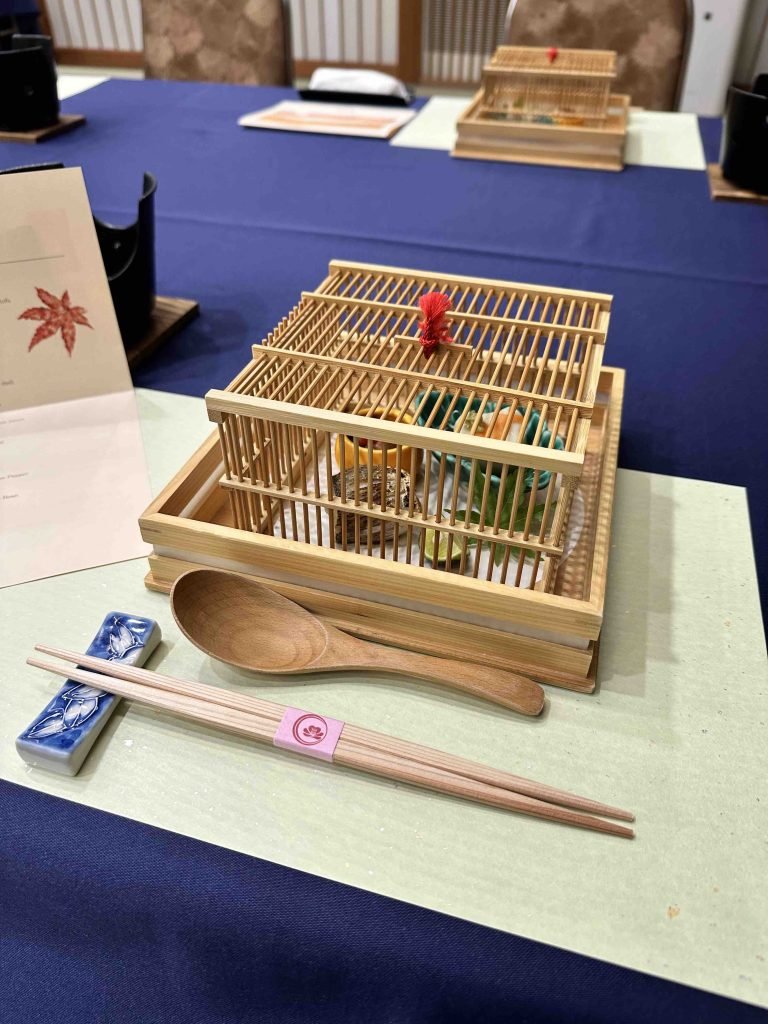
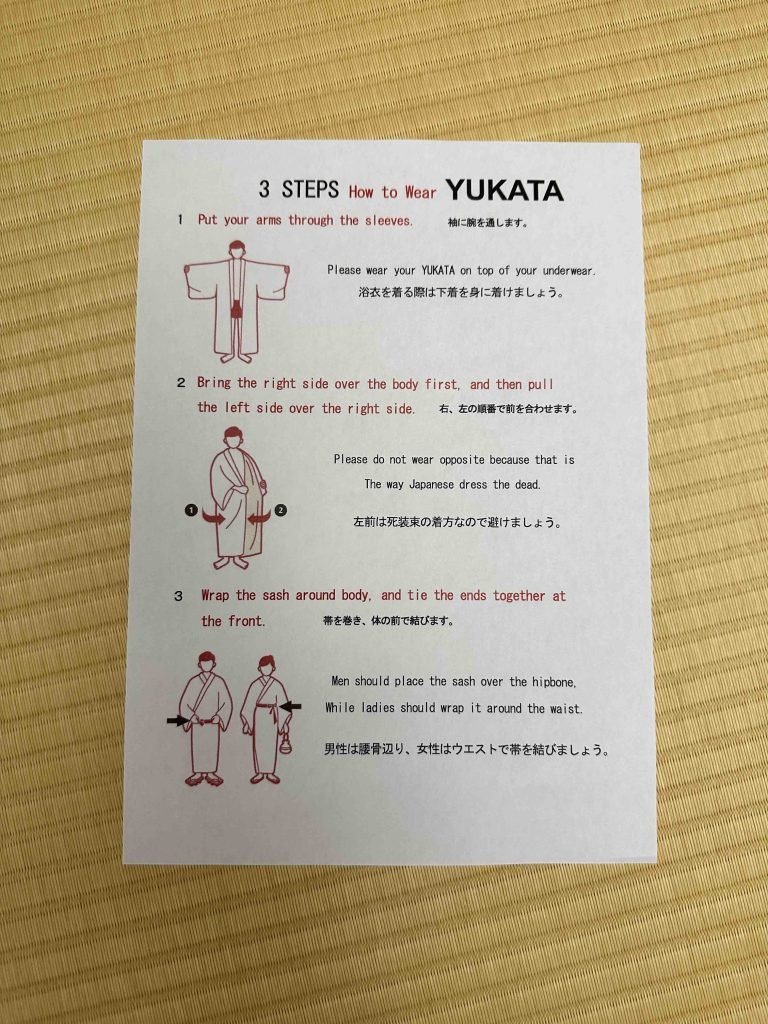
Day Three: Noto to Kanazawa’s Timeless Charm
Note: Everything below was within walking distance (the Geisha evening was a 6-minute drive from the Higashi Chaya District)
From the endless sands of the Chirihama Nagisa Driveway, a short 8 km drive along a coastal sandy beach next to the Japan Sea, to the avant-garde displays at the 21st Century Museum of Contemporary Art, Kanazawa mesmerized. The Kenrokuen Garden, a public space since 1874, dazzled with its 11,000 trees. The care bestowed upon it was evident, especially watching gardeners like Hitoshi Shishime meticulously maintain ancient bonsai trees.
The Geisha district, dating back to 1820, gave a tantalizing glimpse of Japan’s entertainment history. The authenticity was palpable, from the establishments that have existed since the 1600s, like Morihachi, to the jovial ‘Konichiwa’ and respectful bows we received.
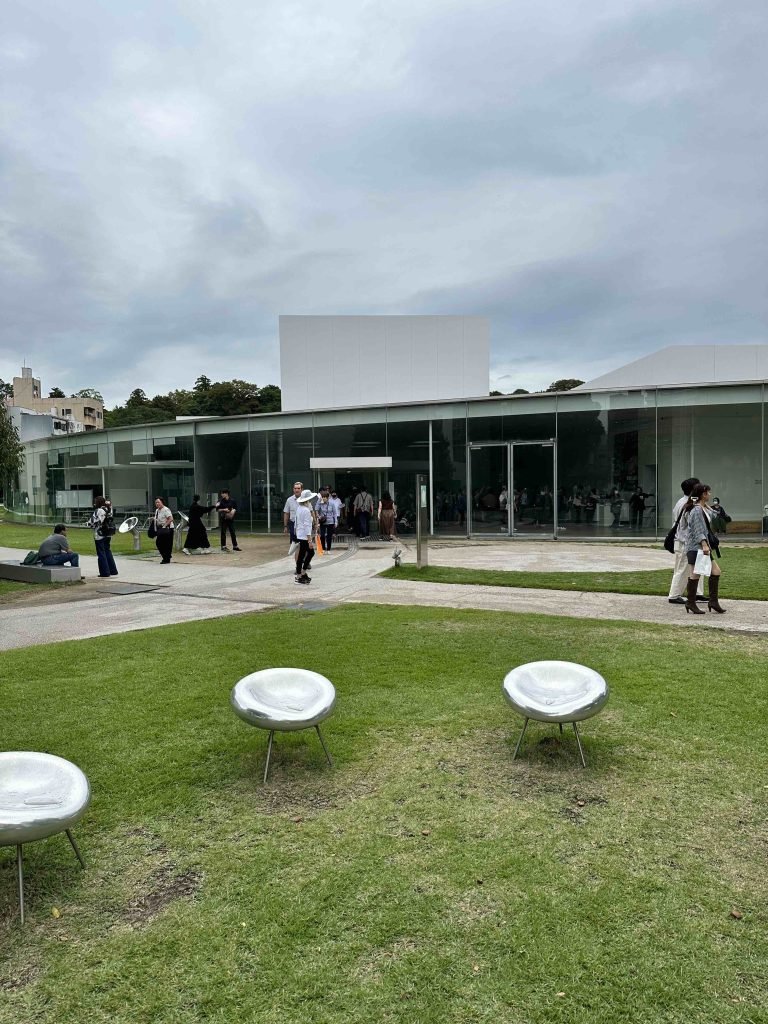
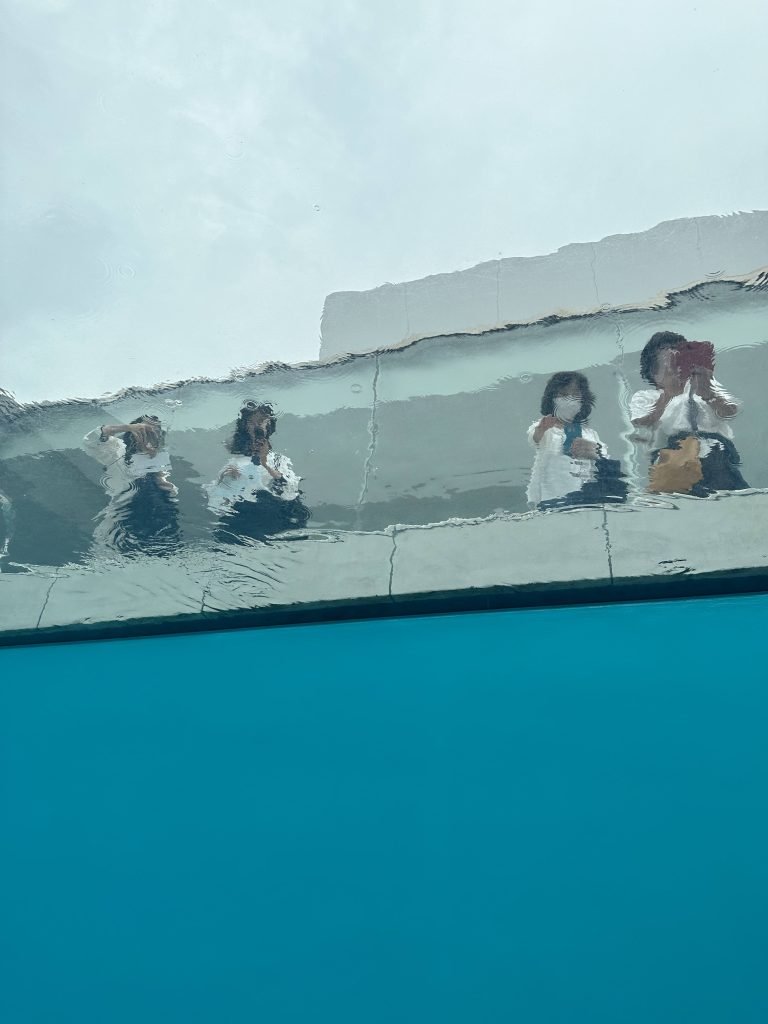
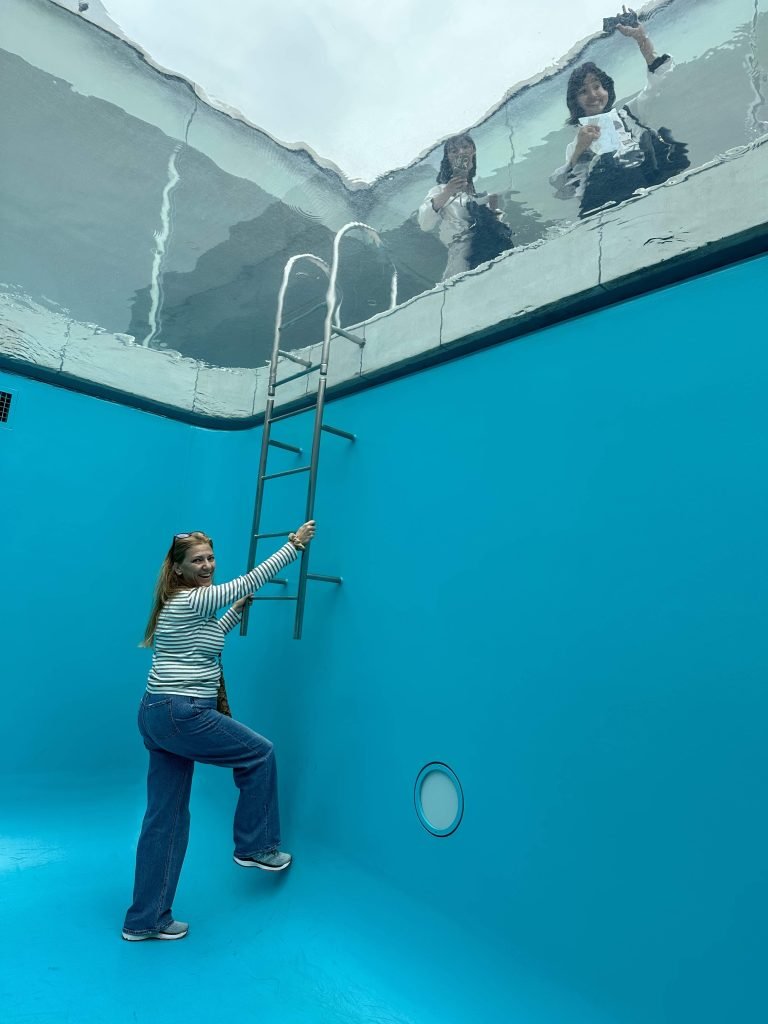
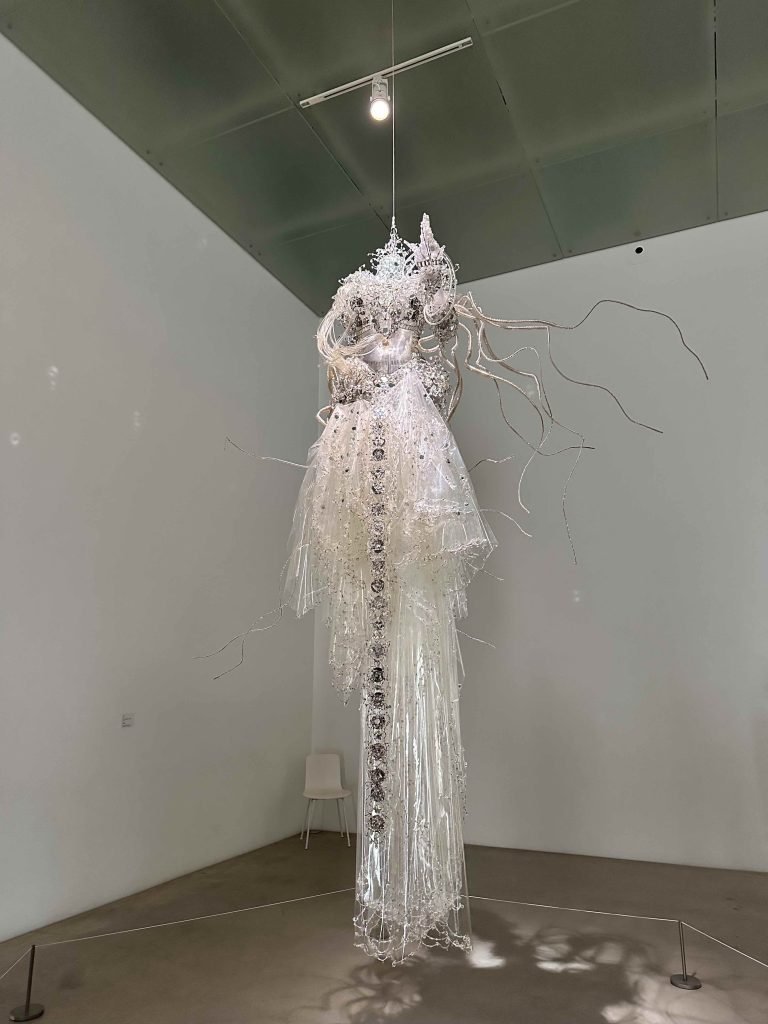
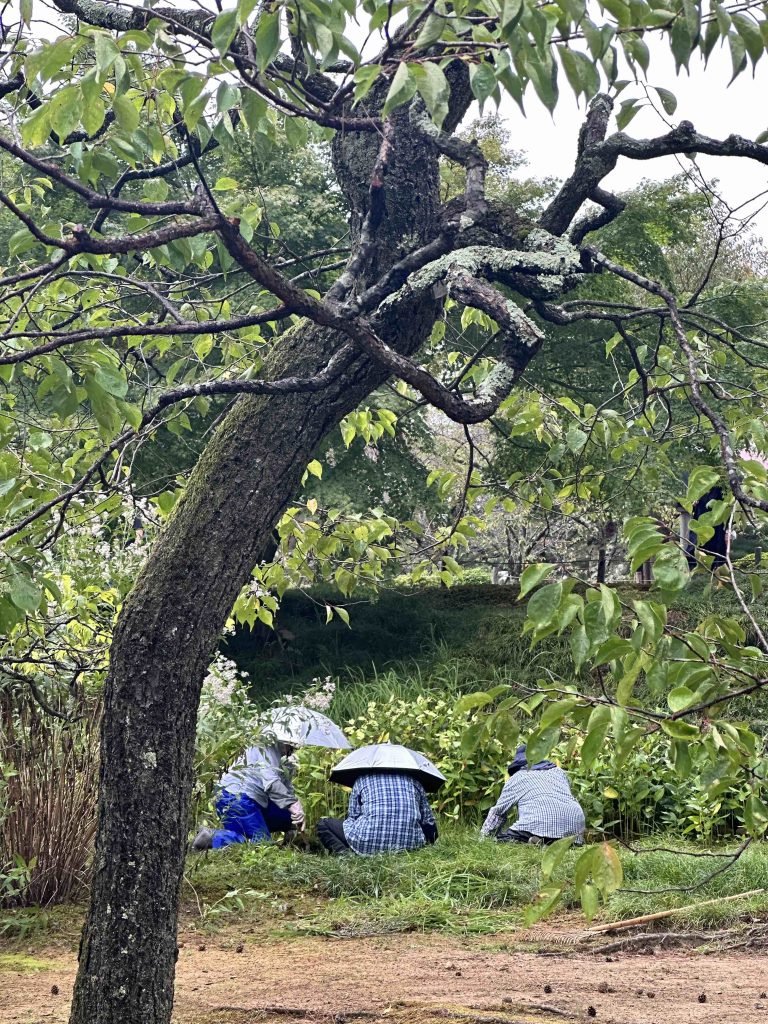
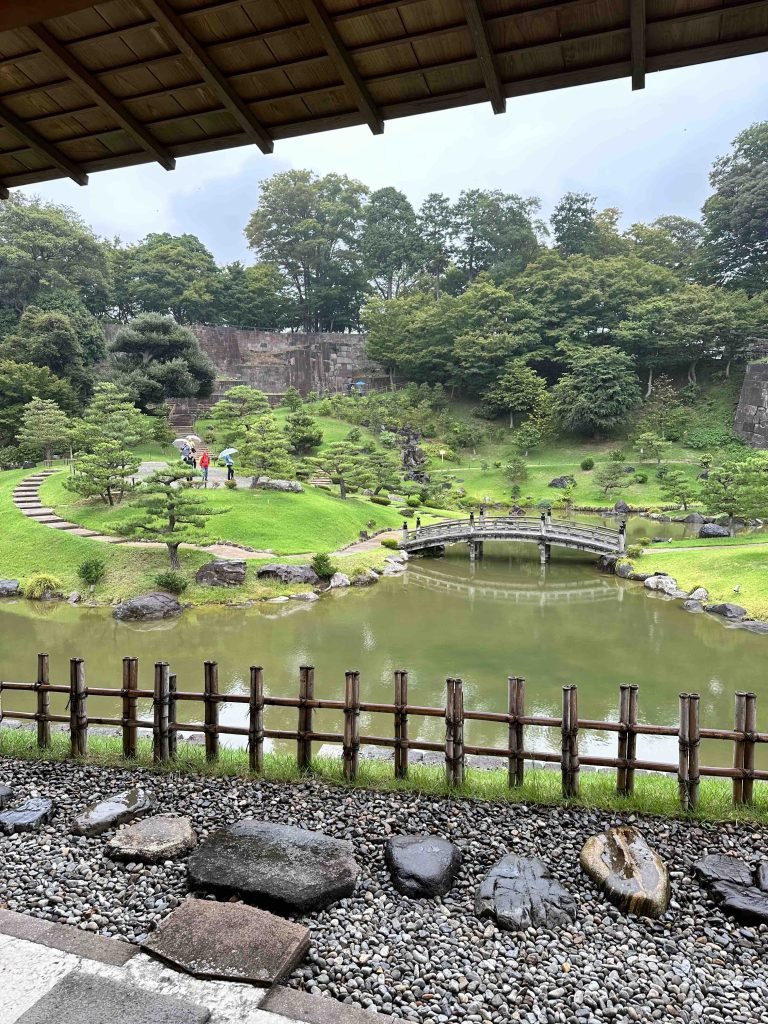
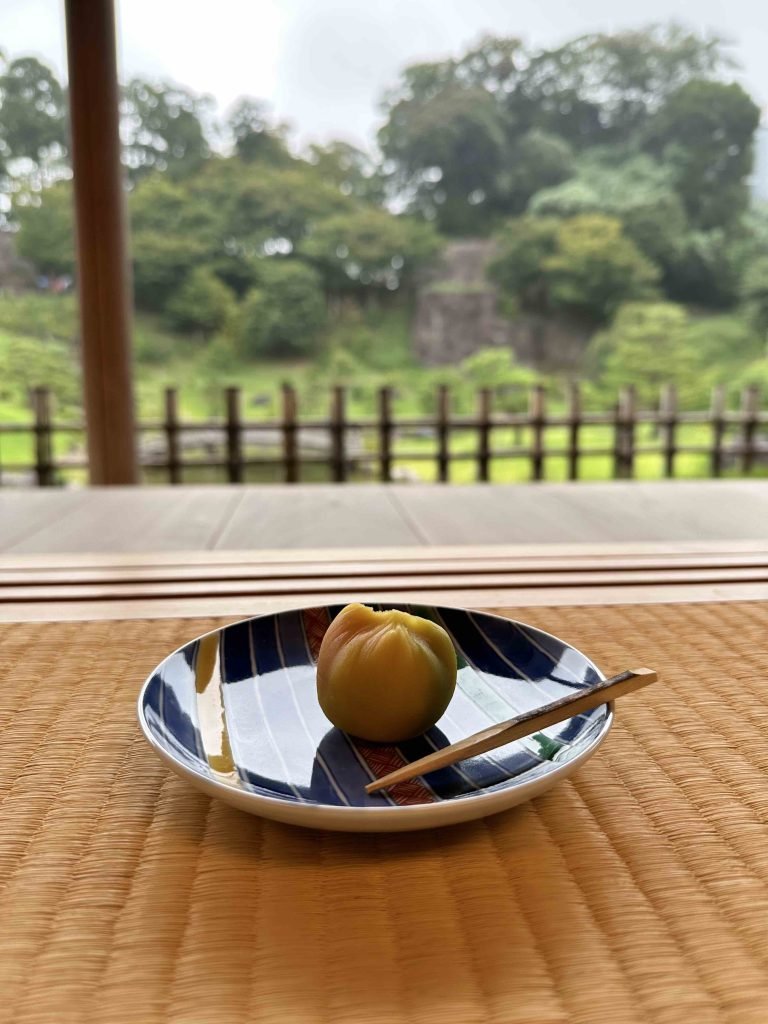
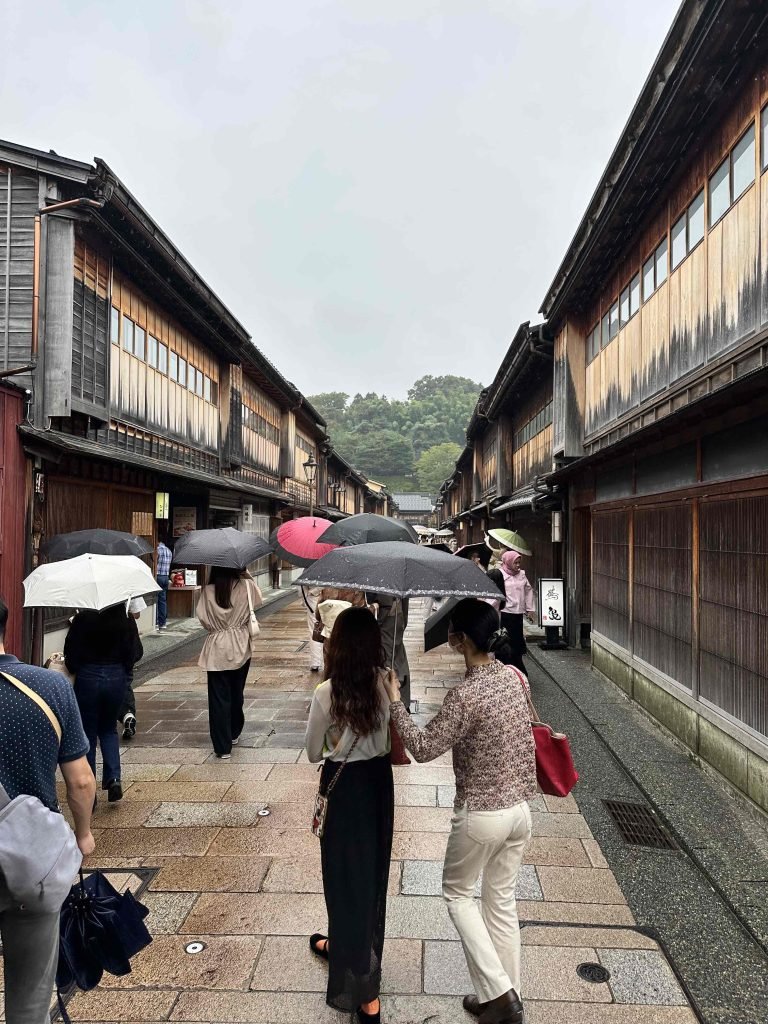
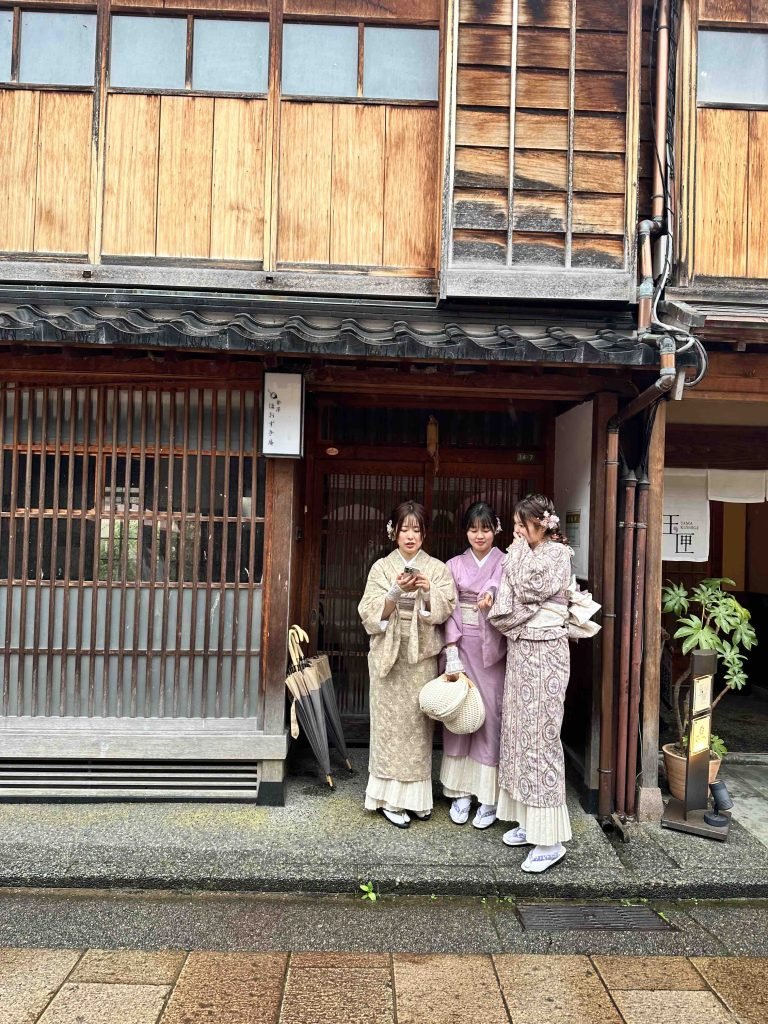
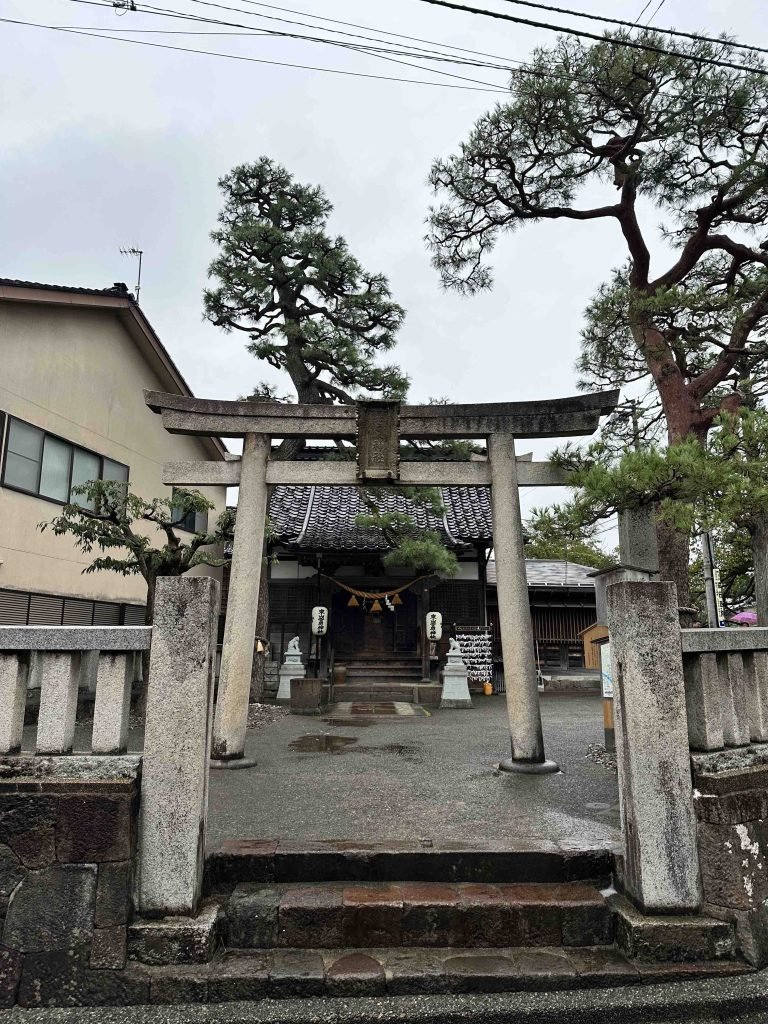
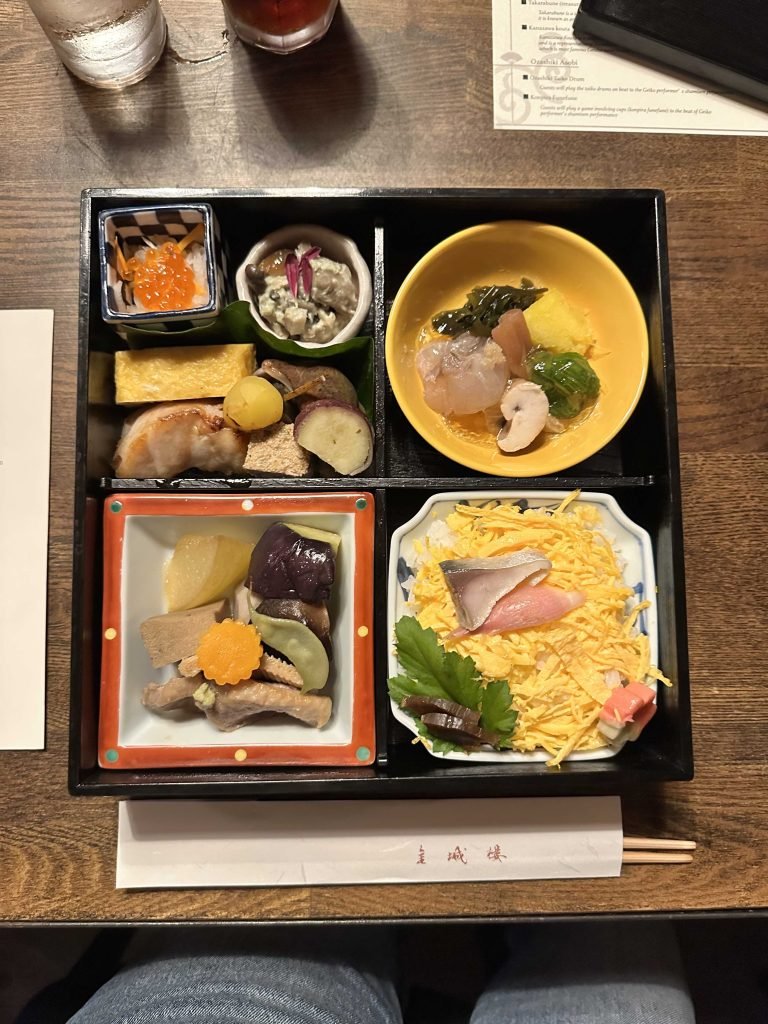
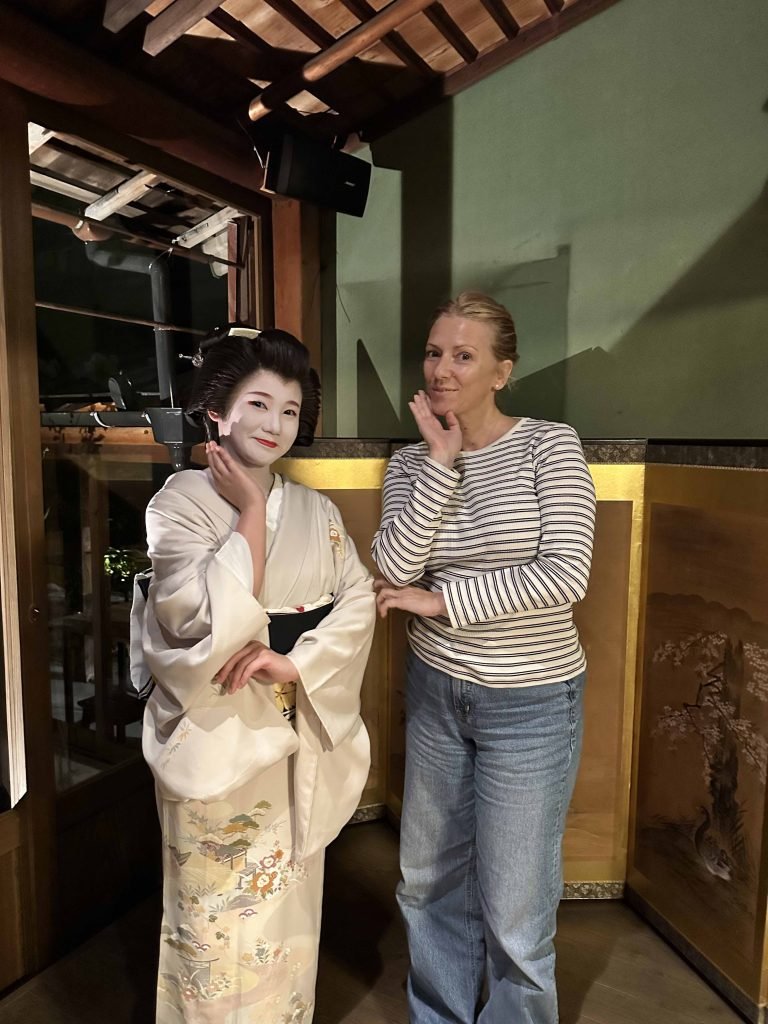
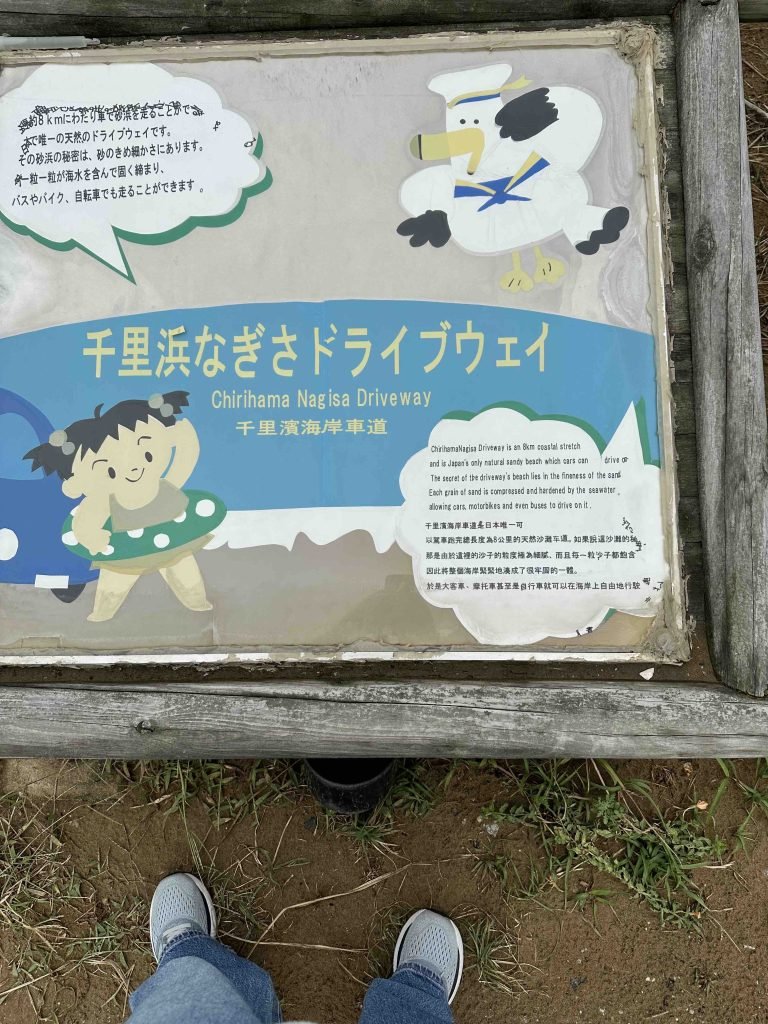
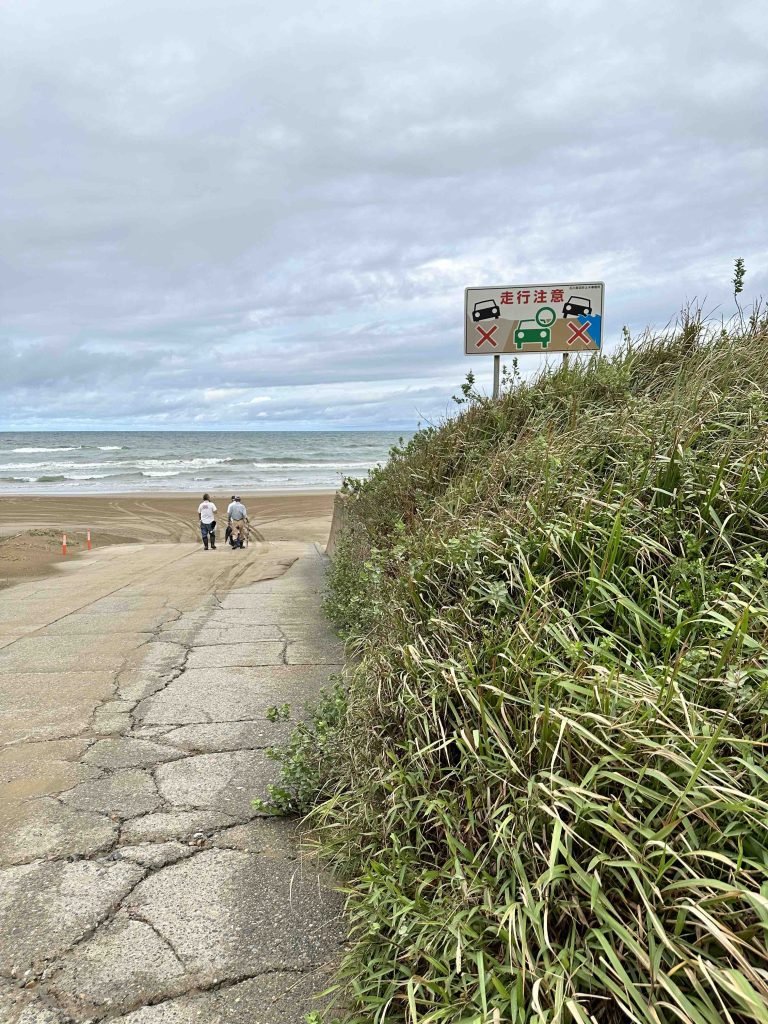
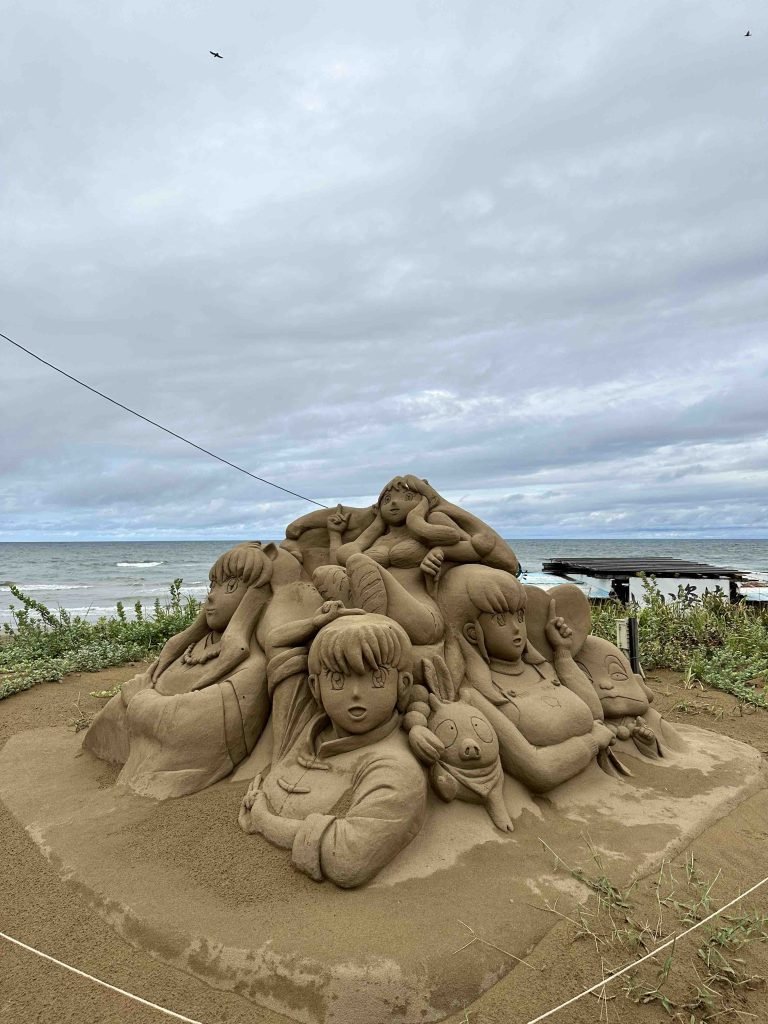
Eat:
- A traditional Japanese breakfast was had at our hotel.
- Lunch at Fusion 21 within the 21st Century of Museum of Contemporary Art. The concept is “Your second time being moved at the museum.” They serve dishes made with local ingredients, including Kaga vegetables, in a spacious, glass-walled room so that you can view the outdoor art installations.
- Dinner + Geisha evening.
Play/Chill:
- Enjoyed a short 8 km drive along a coastal sandy beach next to the Japan Sea along the Chirihama Nagisa Driveway en route to a visit to the 21st Century of Museum of Contemporary Art in Kanazawa.
- A visit to Kenroku-en, a beautiful traditional Japanese garden. Then, I strolled over to Kanazawa Castle and then Gyokusen-inamru Park to enjoy a tea ceremony while viewing the castle and park.
- I then walked over to the Higashi Chaya area to immerse myself in this walkable town filled with Japanese culture and a memorable geisha performance.
Stay:
I stayed at the beautiful Hyatt Centric Kanazawa, a modern hotel that offered all the amenities one could ask for. Up until then, I had been accustomed to staying in traditional Ryokan-style hotels, which perfectly complemented the Noto area’s ambiance. However, since Kanazawa is the capital city of Ishikawa Prefecture, deeply rooted in history and tradition, it made sense to experience a more modern setting, providing a striking contrast to its historical richness. It was here that I had the opportunity to watch my friend Japan’s beloved Astronaut, Soichi Noguchi on a game show. Thanks for the heads up Soichi!
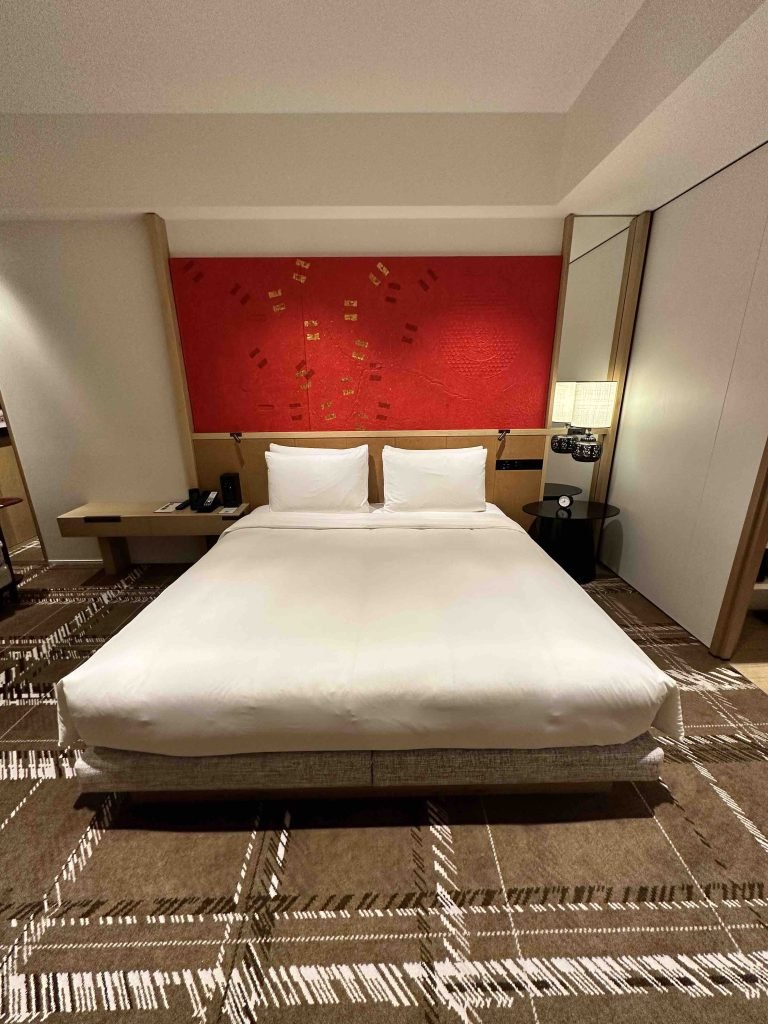
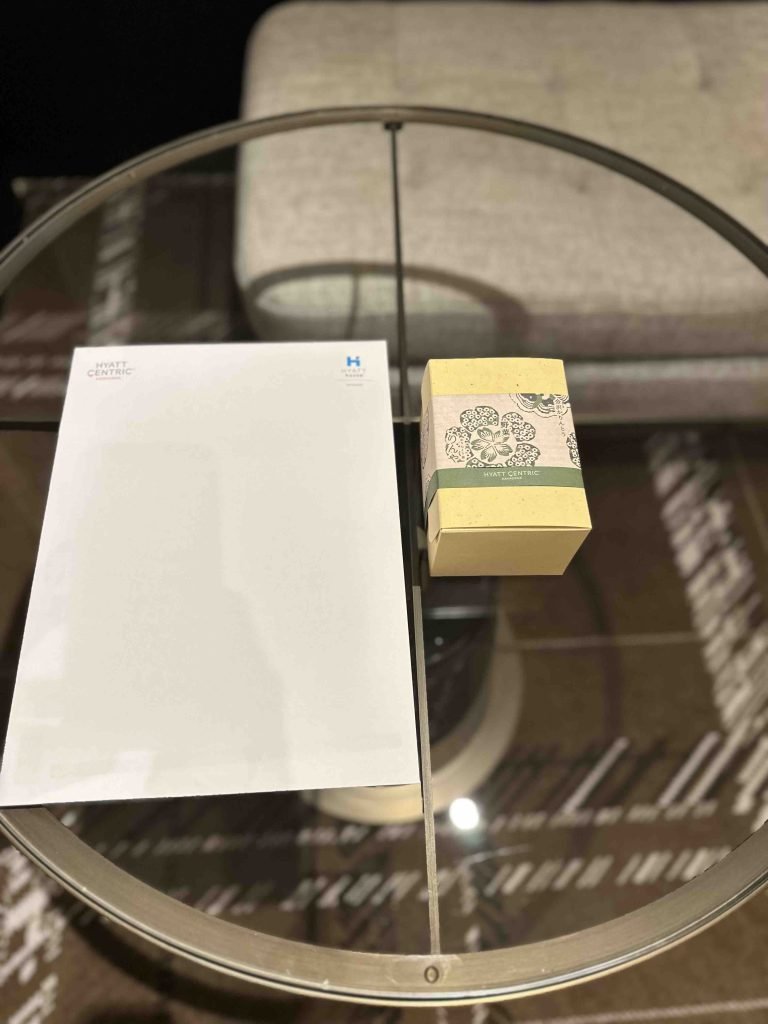
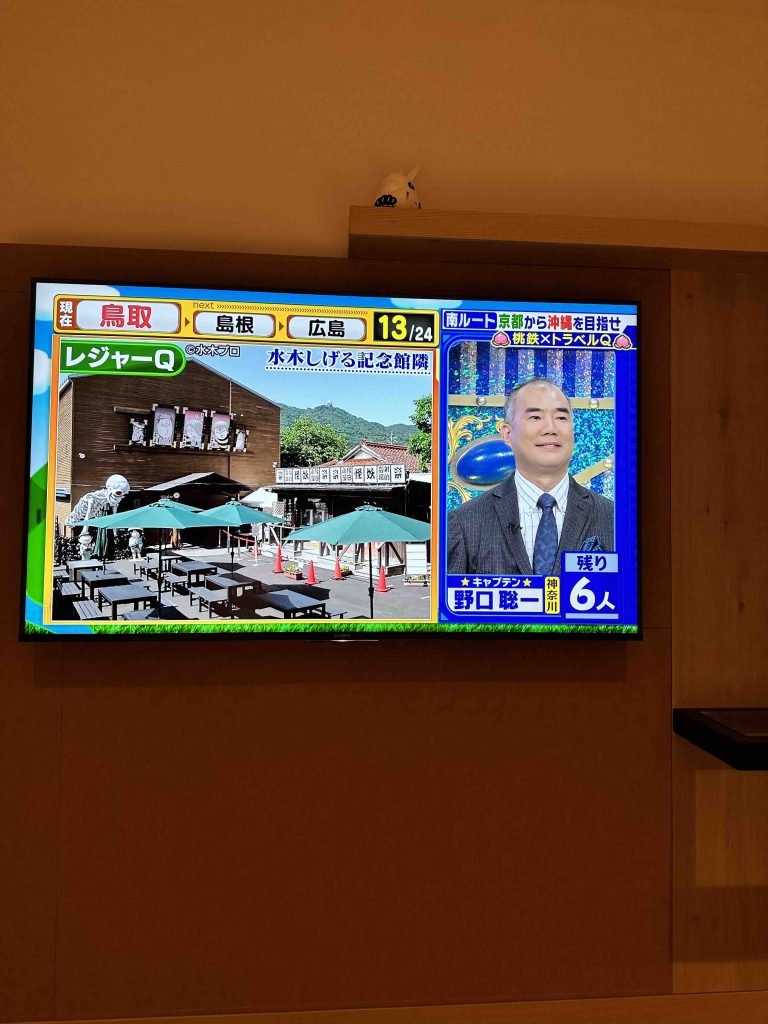
Day Four: Sushi + Sake + Samurai’s – Kanazawa to Kaga
With 170 shops, the Omicho Market was a sensory overload. From picking fresh ingredients for our sushi-making experience at Tadamura Suison to selecting the perfect Sake, every moment was a lesson in Japan’s rich culinary traditions. A highlight was the repurposed 95-year-old building, once a dyeing products factory, now serving as a cooking school.
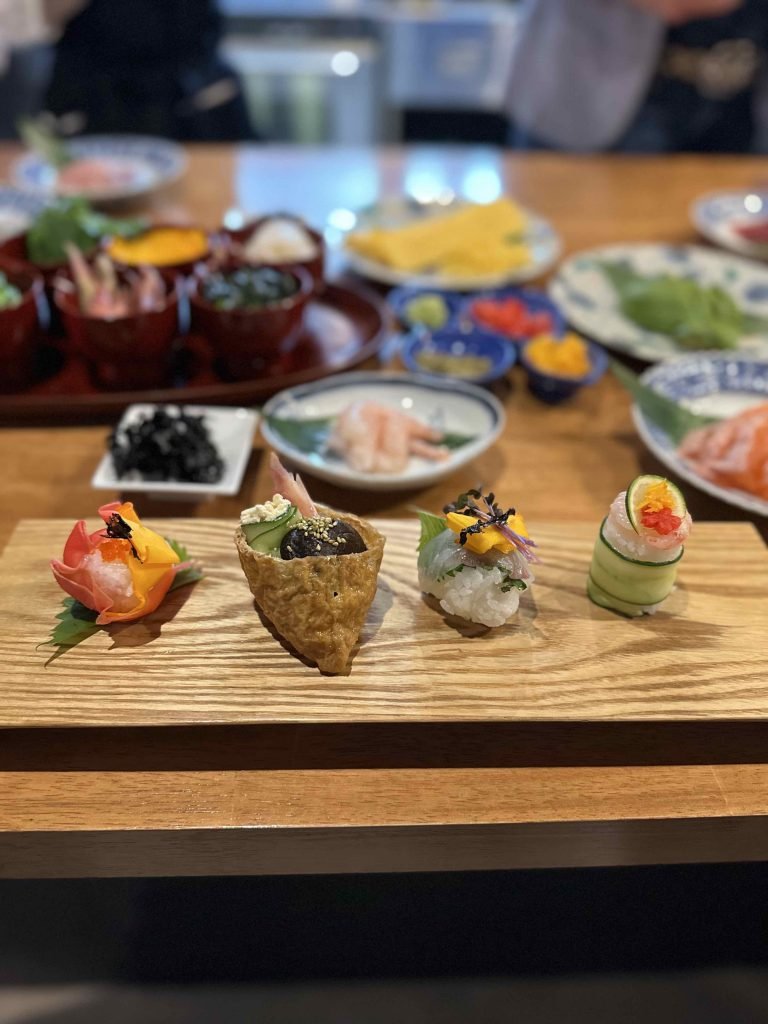
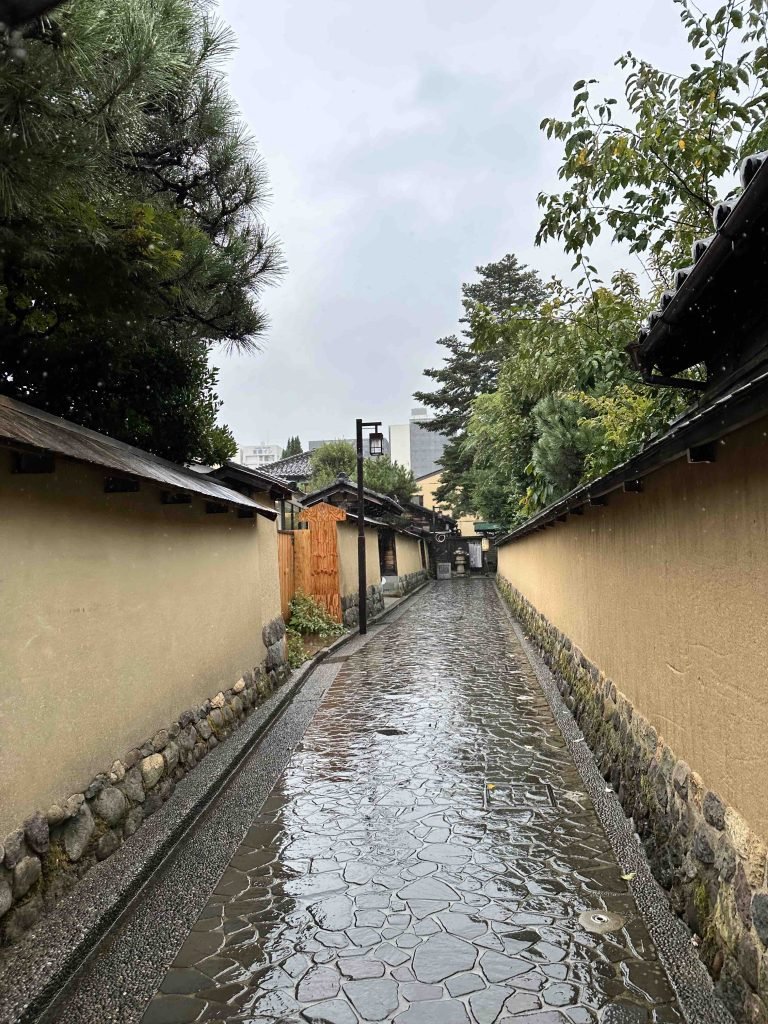
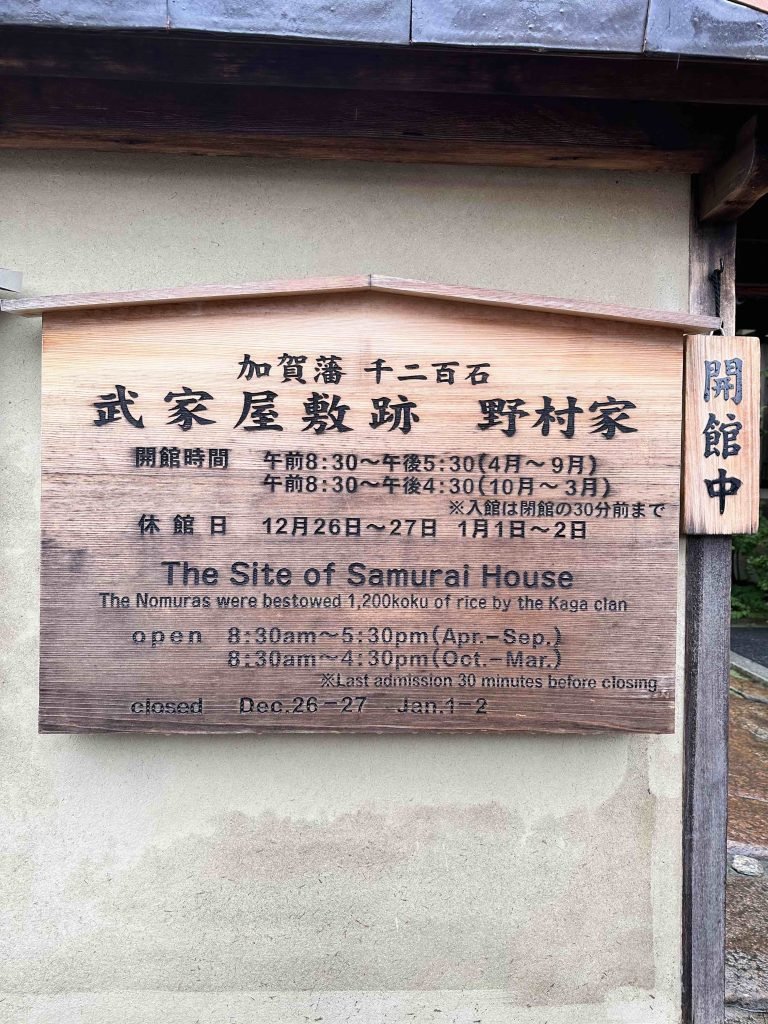
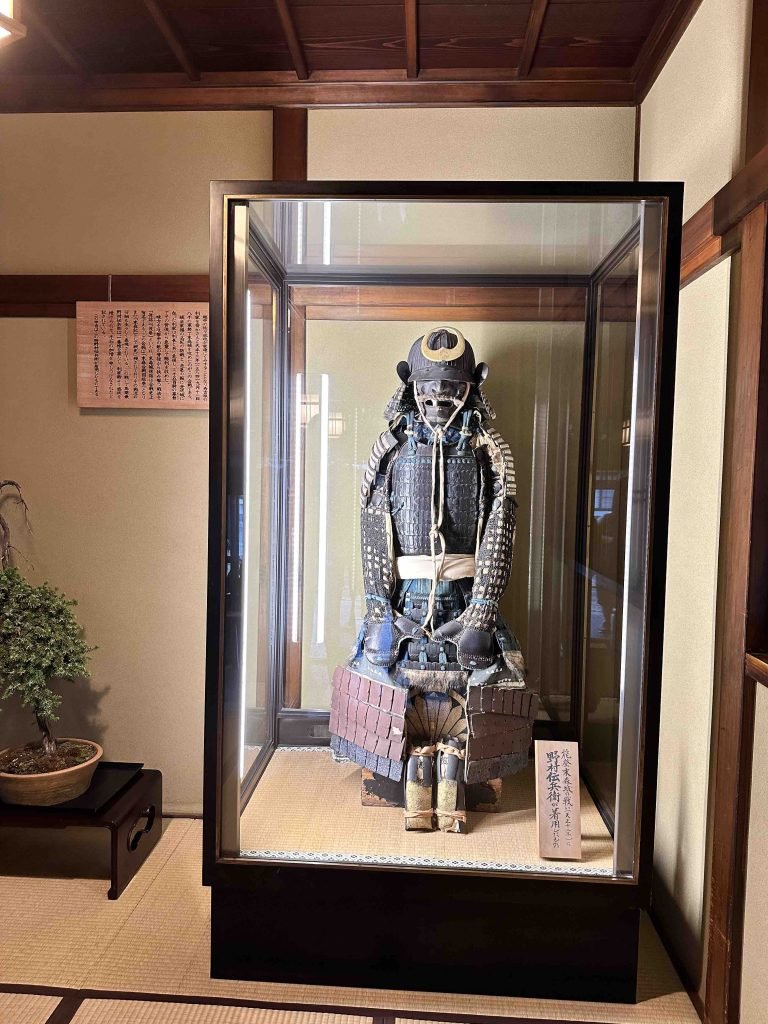
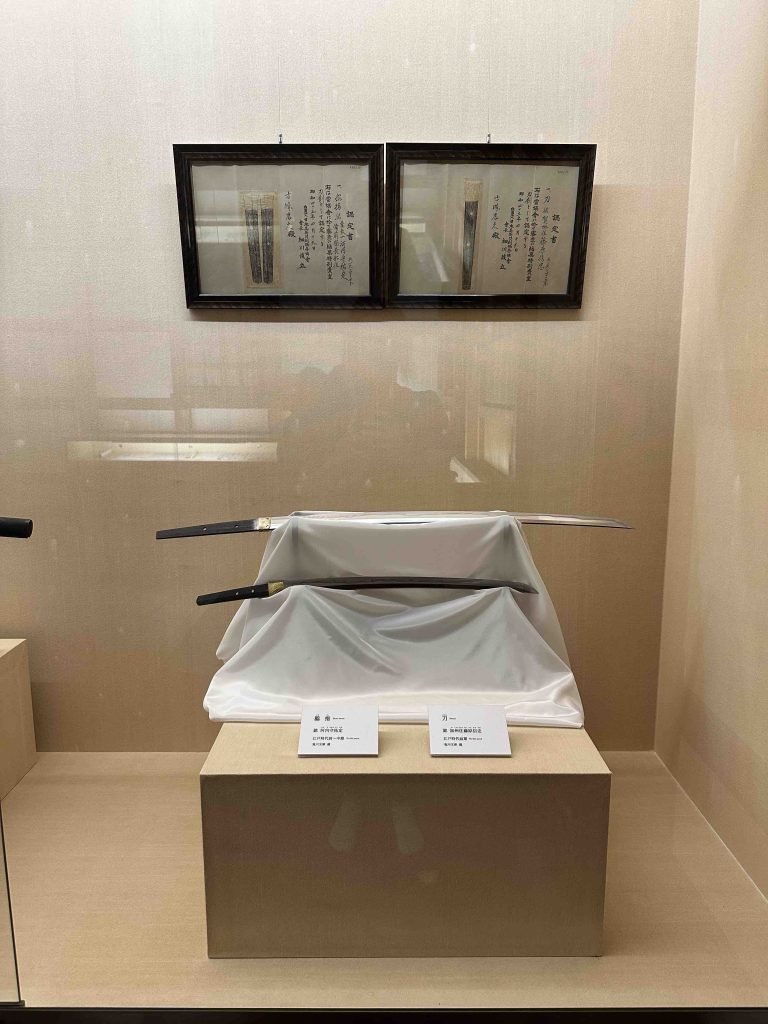
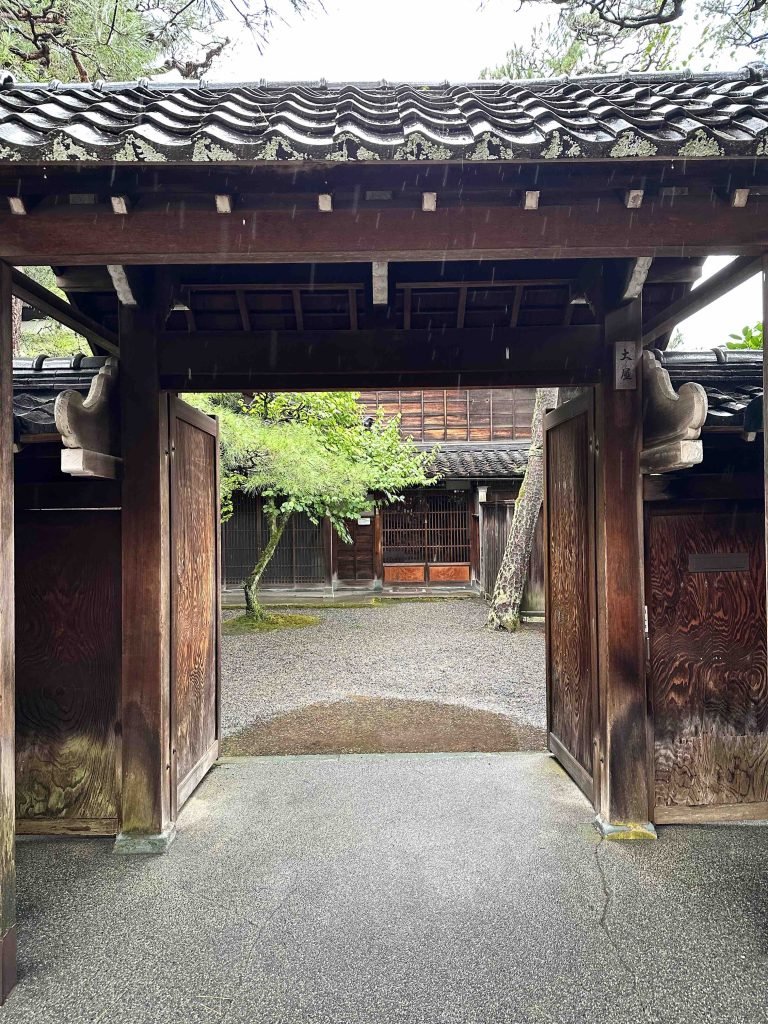
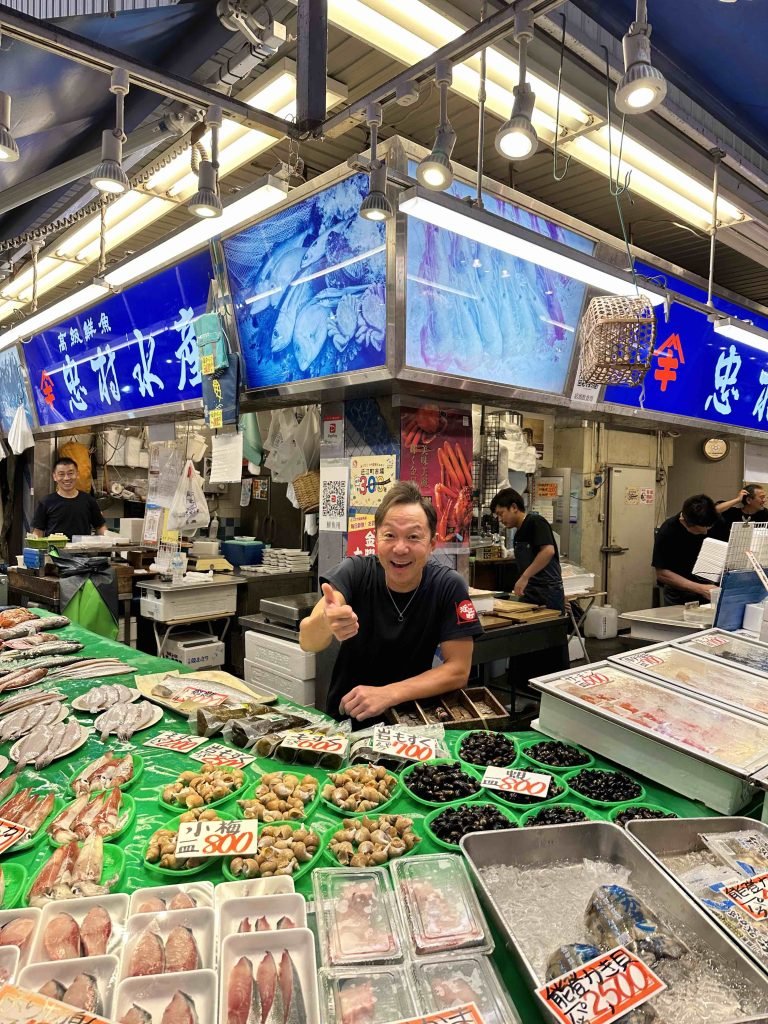
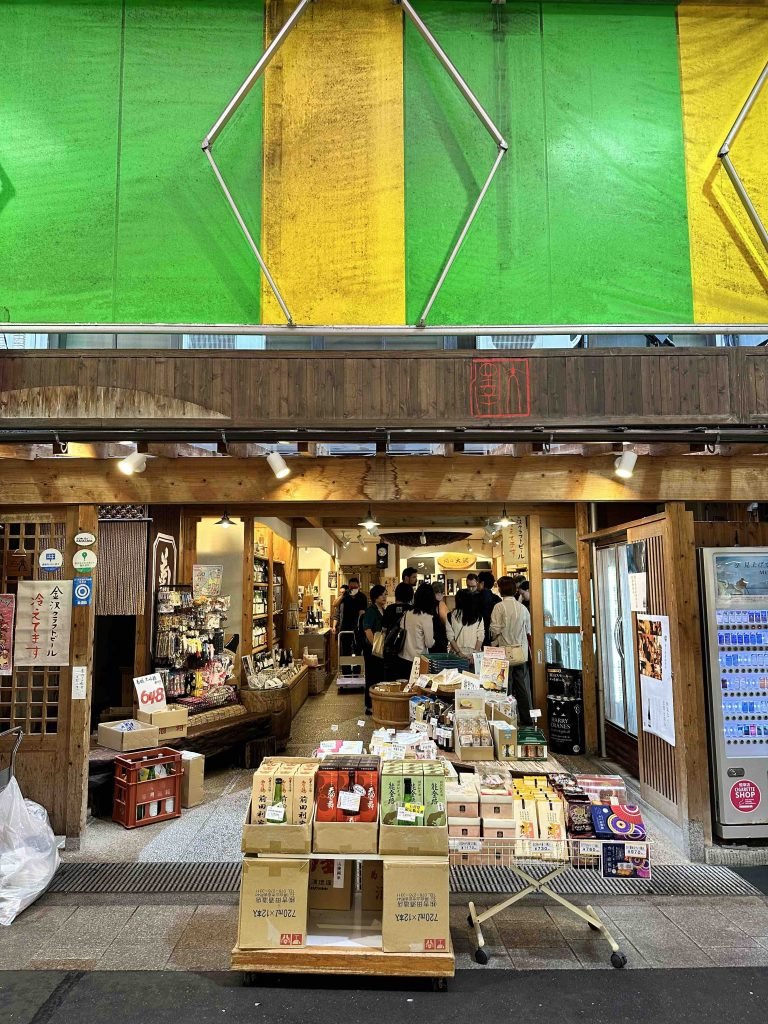
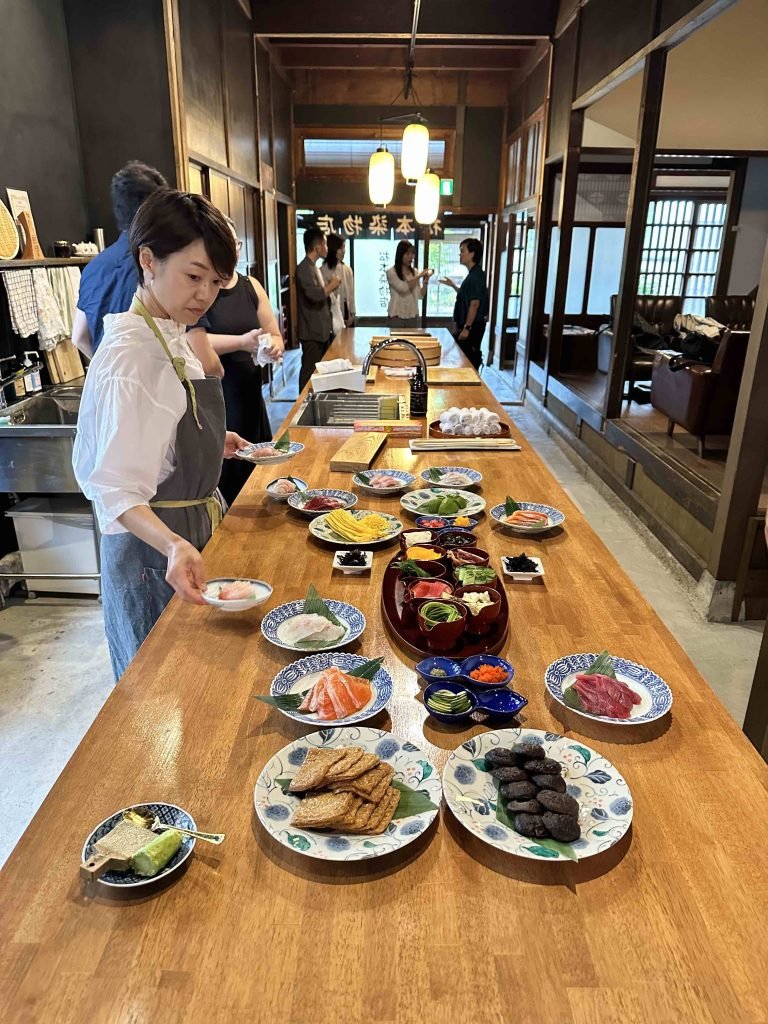
Naohiko Noguchi, a prominent figure in the world of sake brewing, is renowned for his significant contributions to the industry and Japanese culture. Born in the early 20th century, Noguchi’s career spanned several decades, during which he was instrumental in revolutionizing sake brewing techniques. He began his journey in the sake world at a young age, apprenticing under seasoned brewmasters and quickly distinguishing himself with his keen palate and innovative approach.
Noguchi’s most notable contribution was his development of new yeast strains, which greatly enhanced the flavour profiles of sake. His pioneering work in yeast cultivation led to the creation of sake varieties with more complex and refined tastes, elevating the drink’s status both domestically and internationally. He also focused on improving the fermentation process, ensuring consistent quality and taste across different batches.
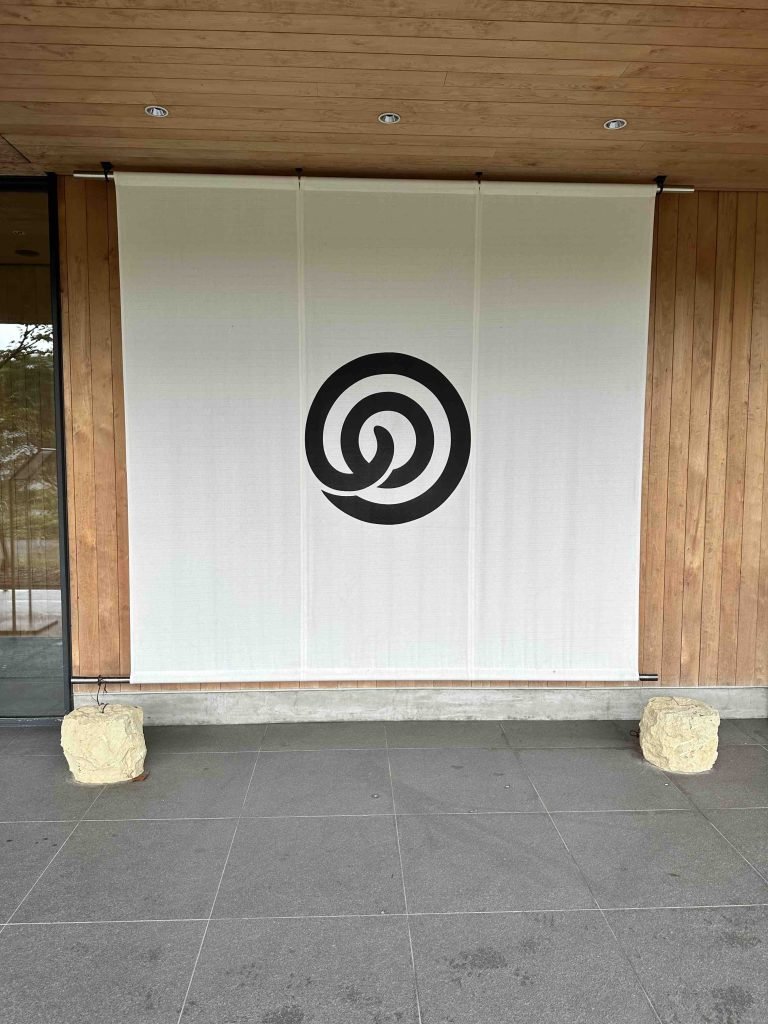
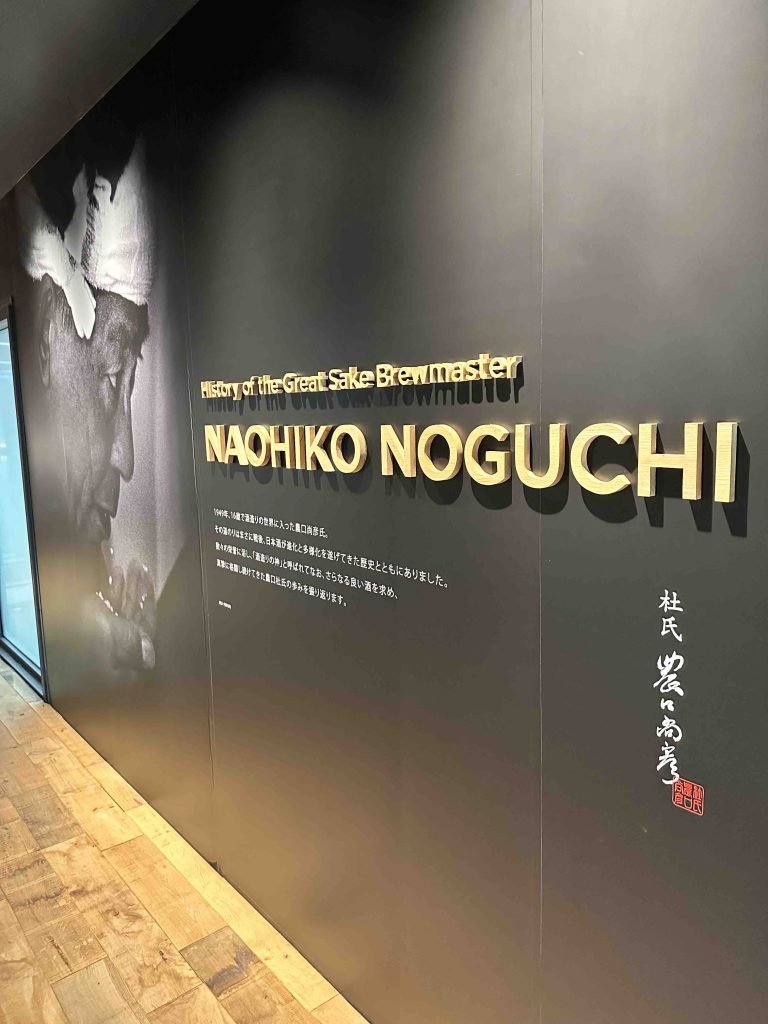
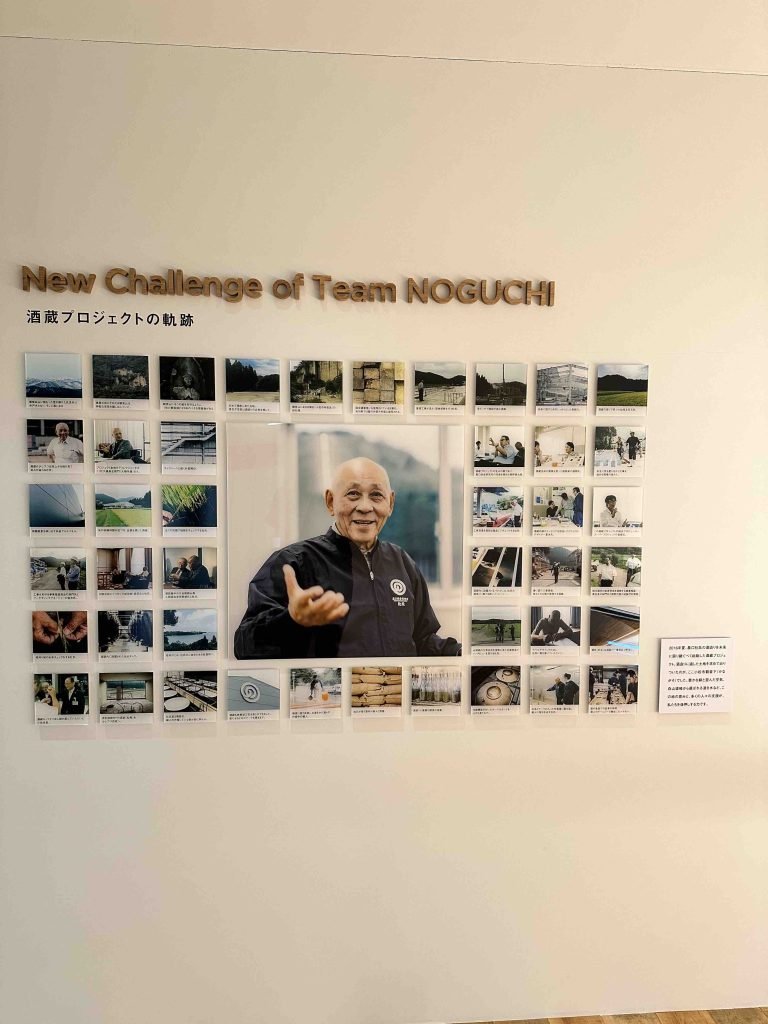
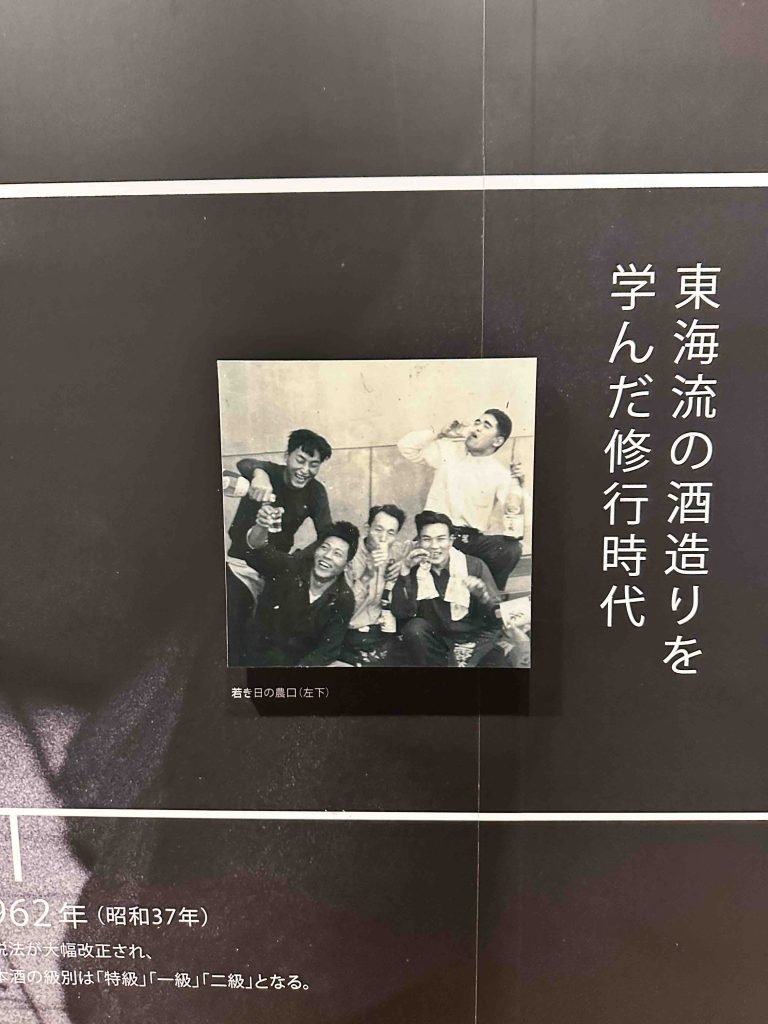
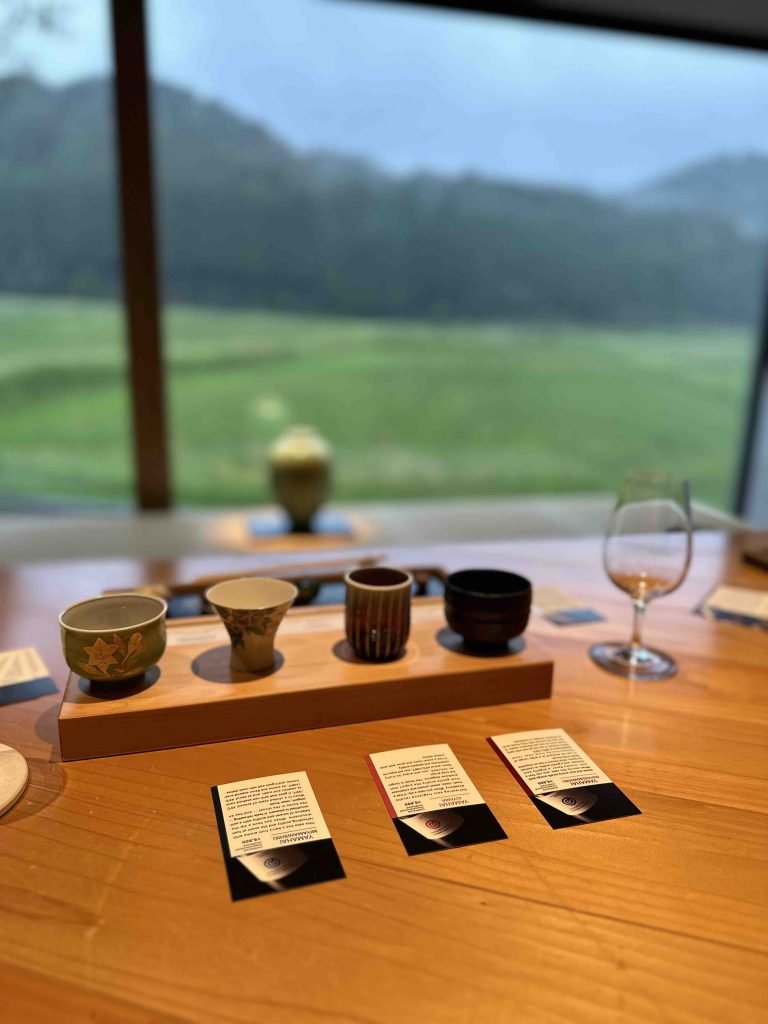
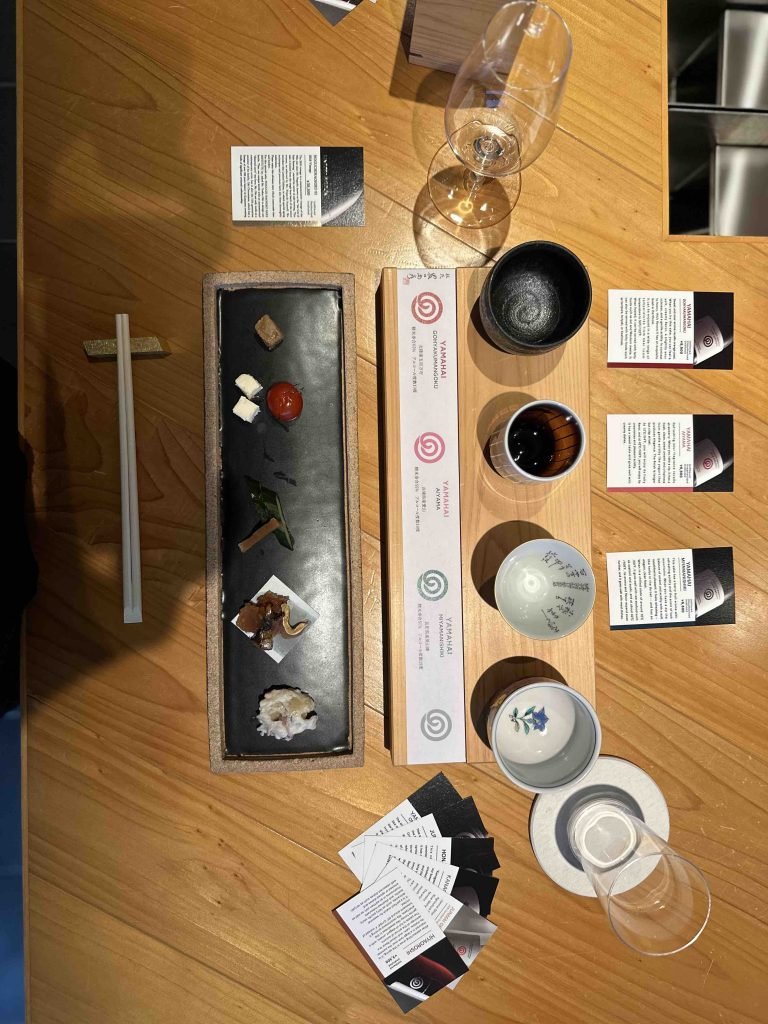
Beyond his technical achievements, Noguchi was also a mentor and teacher to many aspiring sake brewers, sharing his knowledge and passion for the craft. His influence extended beyond the brewery, as he played a key role in promoting sake culture, educating the public about its traditions and nuances, and advocating for sake’s recognition as a cultural heritage.
Noguchi’s dedication and innovations not only transformed sake brewing but also contributed significantly to the preservation and promotion of Japanese cultural heritage, making him a revered figure in the history of sake and Japan. His legacy continues to inspire modern brewers, ensuring that the art of sake brewing remains a vital and evolving tradition.
Trivia: Despite his profound impact on the sake industry and his innovations in brewing techniques, Noguchi himself did not partake in drinking sake. This fact is particularly intriguing given his reputation for enhancing the flavour profiles of sake and his dedication to improving its fermentation process. His ability to revolutionize the world of sake without being a consumer himself is a testament to his extraordinary skill and sensory acumen.
Eat:
- 280-year-old Omicho Market to snack and shop for ingredients for a sushi cooking class.
- Auberge Eaufeu featuring Grand Prix chef Itoi Shota. He also worked at the 3x Michelin Star restaurant Manresa in California. This restaurant is located next to the Noguchi Naohiko Sake Institute (see below).
Play/Chill:
Head back to the location of the geisha experience for a sushi cooking class.
Kanazawa has a remarkable samurai history and heritage. Stop by the Naga-machi District and explore one of the best-preserved structures of the original samurai district in Japan.
Take a 35-minute drive to the Noguchi Naohiko Sake Institute. Take a tour to learn about the history of sake making of the “godfather of sake,” Mr. Naohiko Noguchi. Funny bit of trivia: Mr. Noguchi revelled in the science behind making saki. In 2008, he was awarded the Medal of Honor with Yellow Ribbon from the Emperor of Japan for his contributions, although he himself does not drink sake!
Stay:
Situated in Kaga within Ishikawa Prefecture, Tachibana Shikitei is a welcoming onsen ryokan ideal for families seeking relaxation and renewal. This comfortable lodging offers a range of amenities, including air conditioning, refrigerators in rooms, and complimentary Wi-Fi access for all guests. The ryokan also features convenient services like a 24-hour reception, room service, and a gift shop, alongside leisure facilities such as a hot tub and a lounge area. Guests with cars will appreciate the availability of free parking. Its proximity to local attractions such as the Hattori Shrine, Yakuoin-Onsenji Temple, and Yamashiro Onsen Foot Bath, all easily accessible on foot, makes Tachibana Shikitei a great base for exploring the highlights of Kaga.
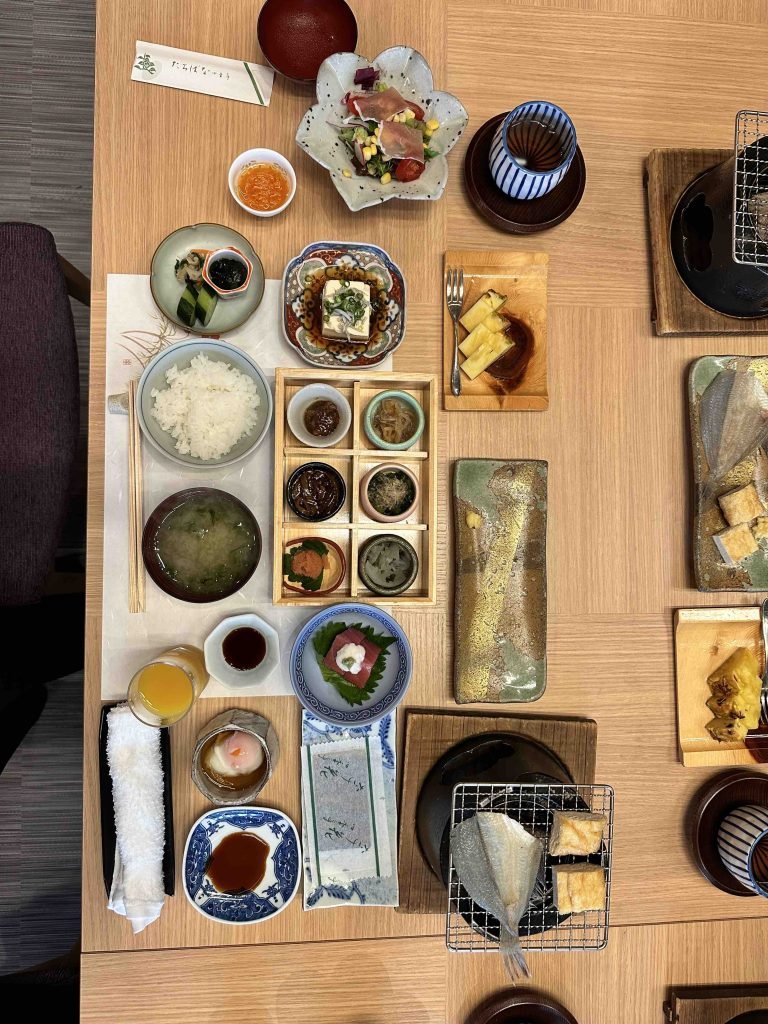
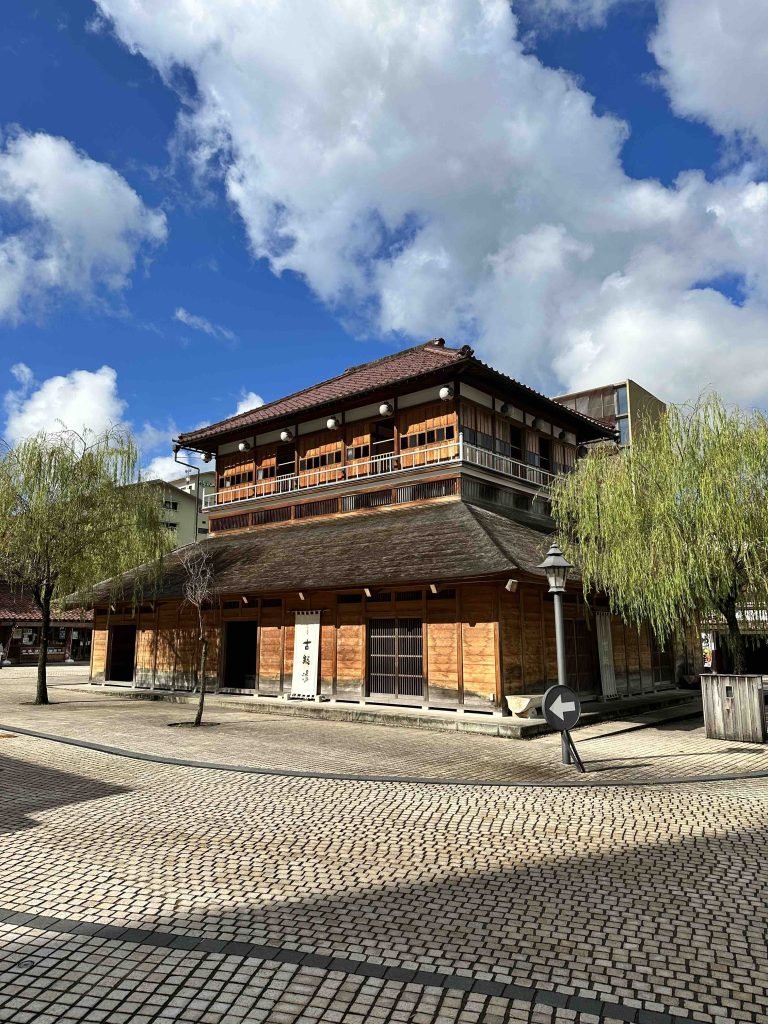
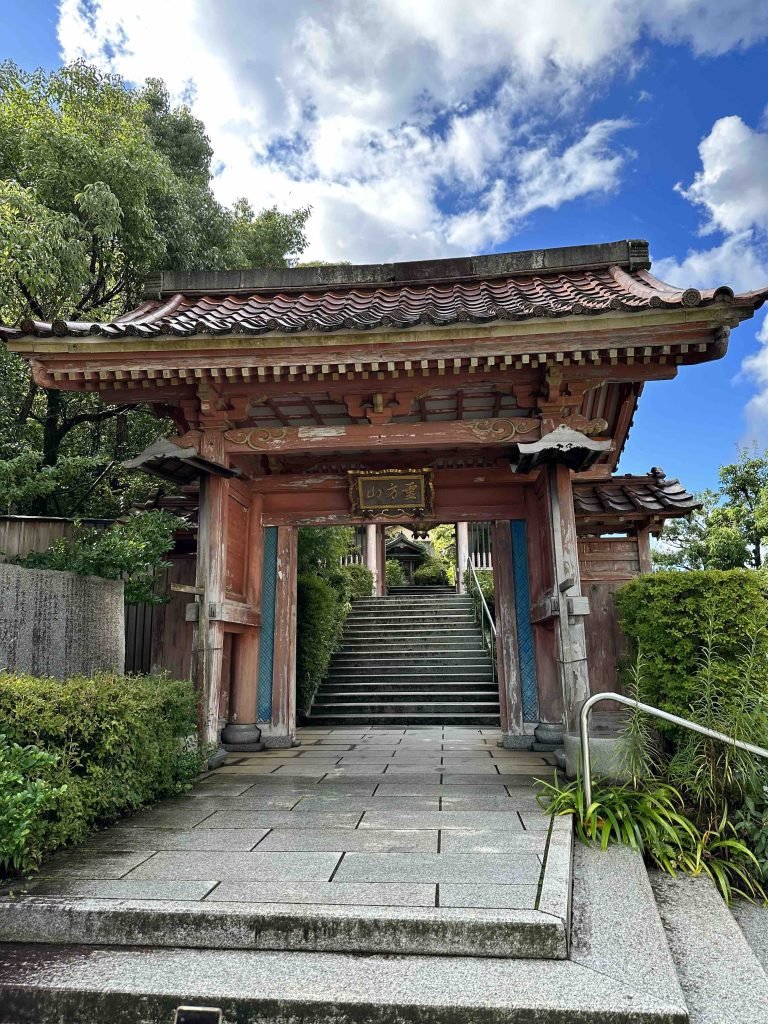
Day Five: Kaga
The day began with a tranquil walk to a nearby temple and shrine, setting a peaceful tone. After a hearty breakfast, we strolled through a lush forest gorge, soaking in nature’s serenity. The town offered delightful surprises, like the delicious croccas and a sumptuous meal at a local French restaurant.
Another lacquer demonstration emphasized its three core phases: wood carving, lacquering, and artistry. Each piece, whether painted or showcasing its wood grain, was a masterpiece.
Throughout my journey, Japan’s unique blend of tradition and modernity was evident. From the cheerful ‘konichiwa’ and respectful bows to the avant-garde art installations, Japan offers lessons in humility, respect, and the importance of preserving heritage while embracing change. In a world often racing ahead, there’s much to learn from Japan’s balanced approach to life.
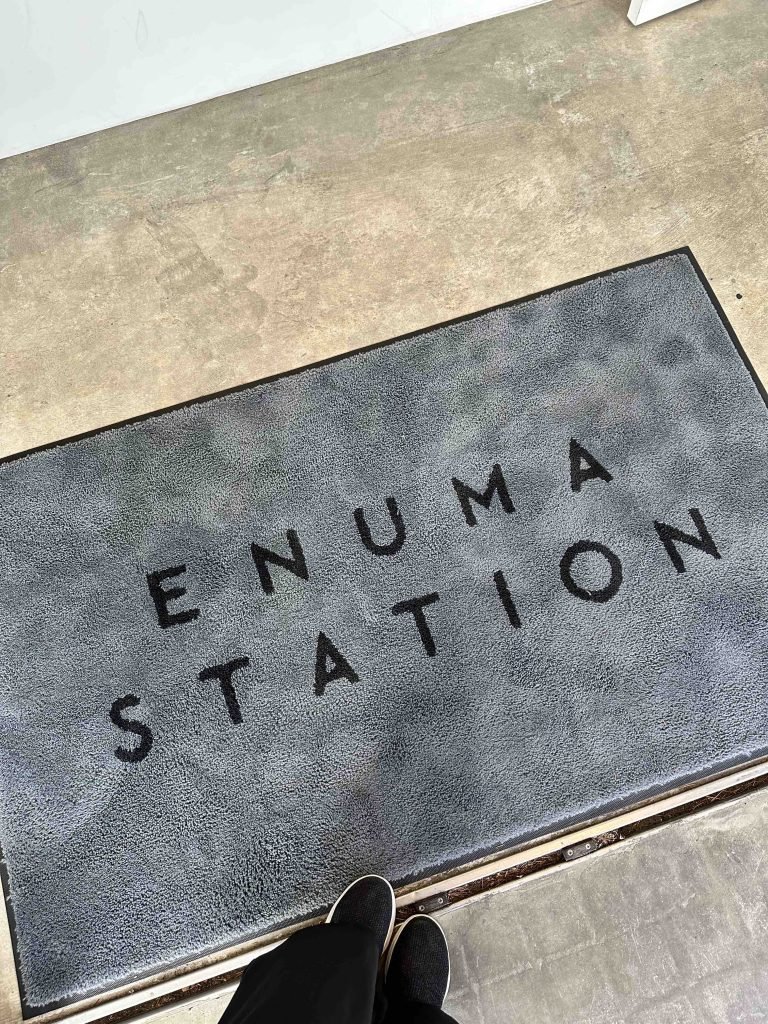
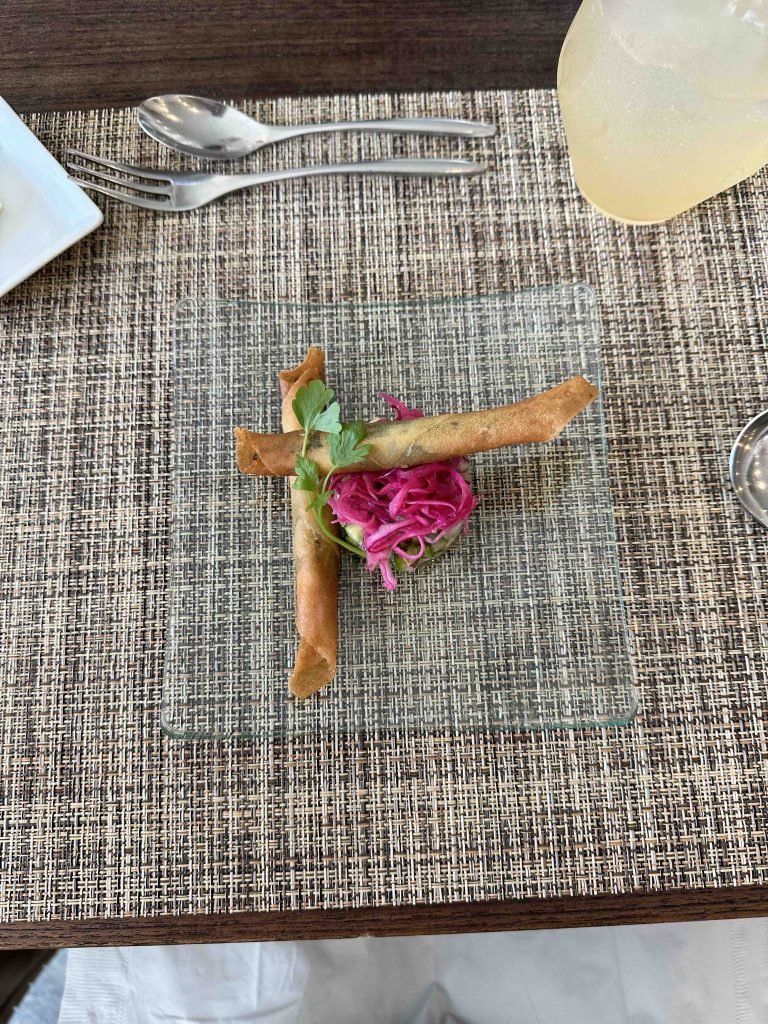
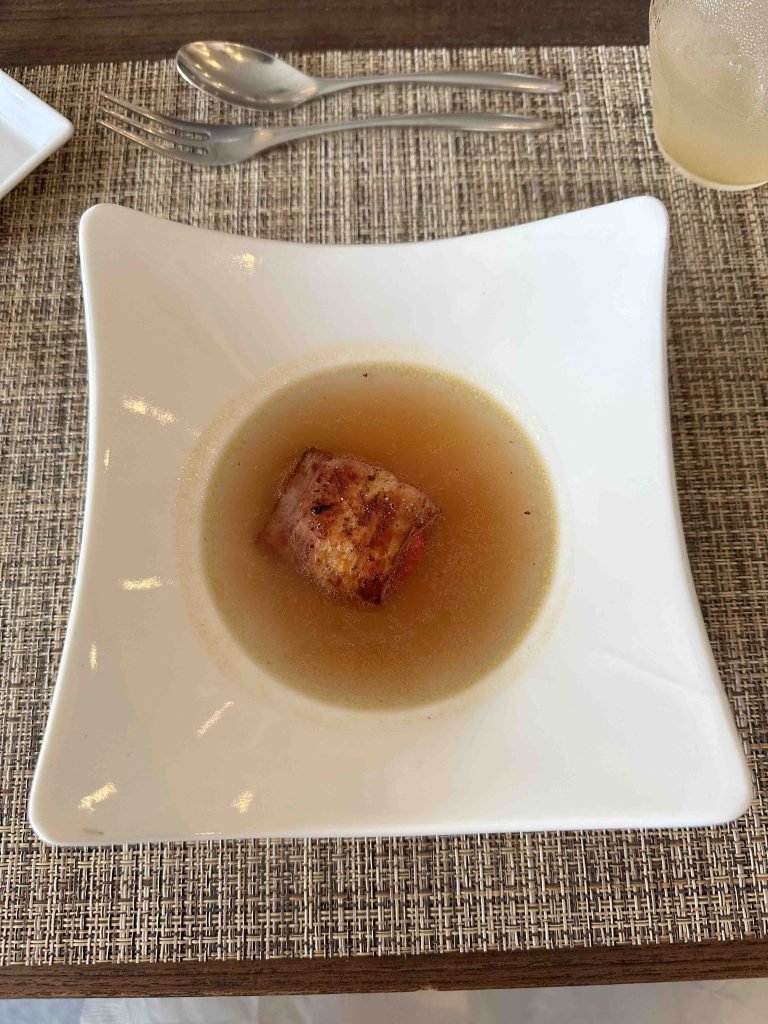
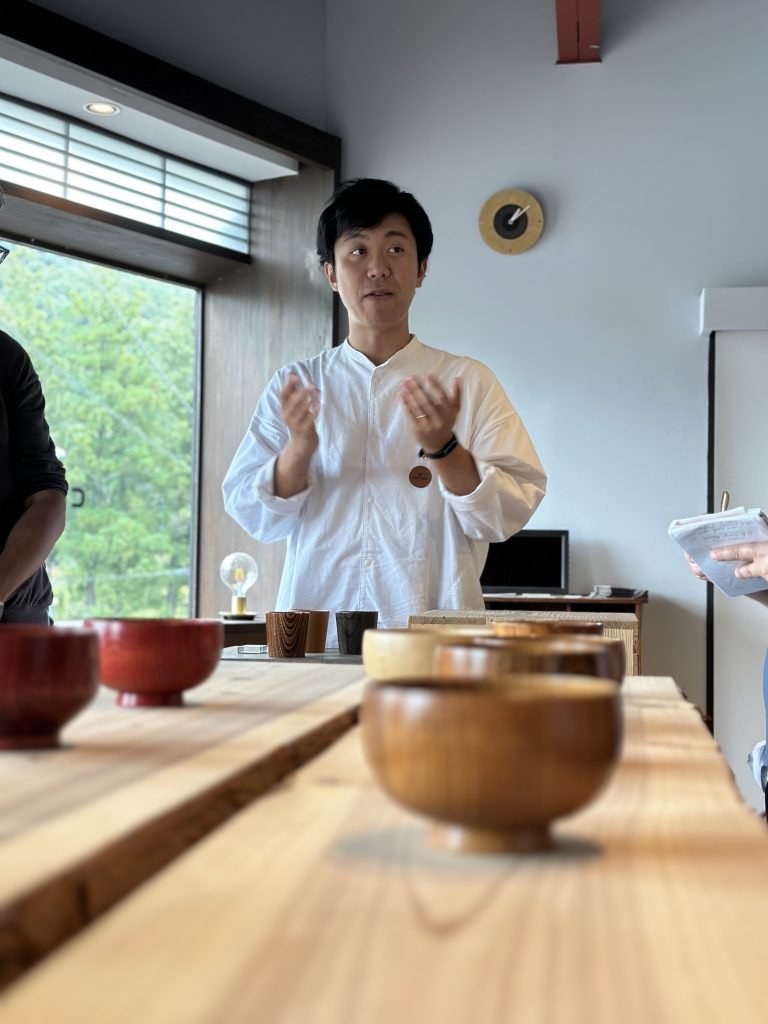
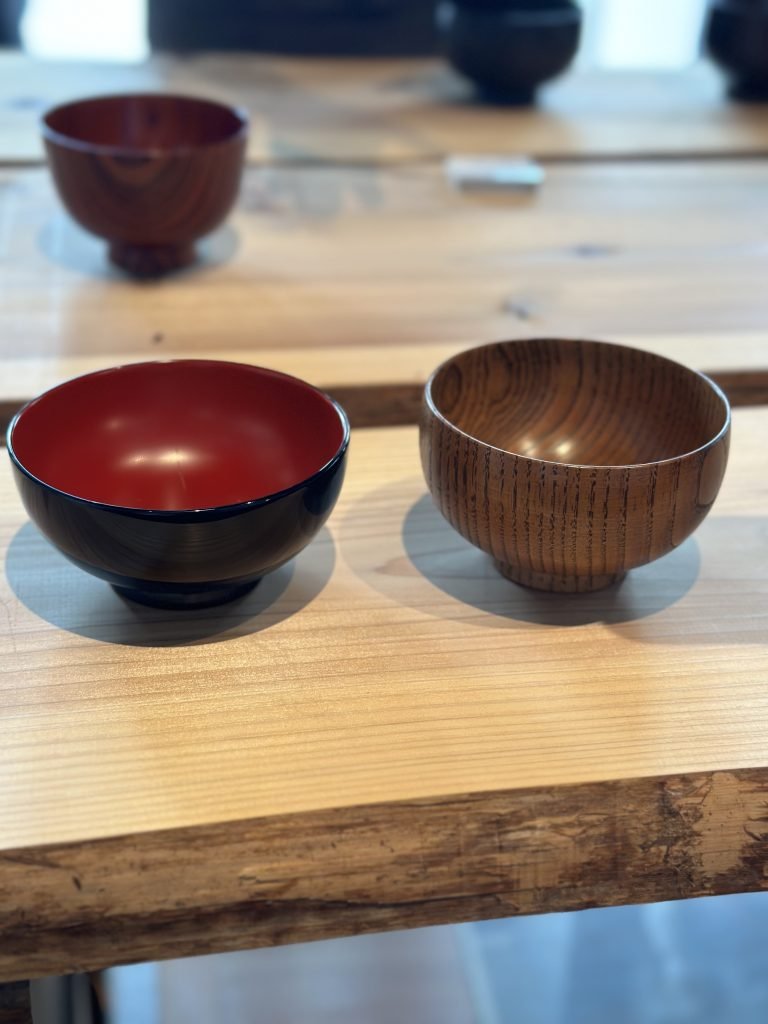
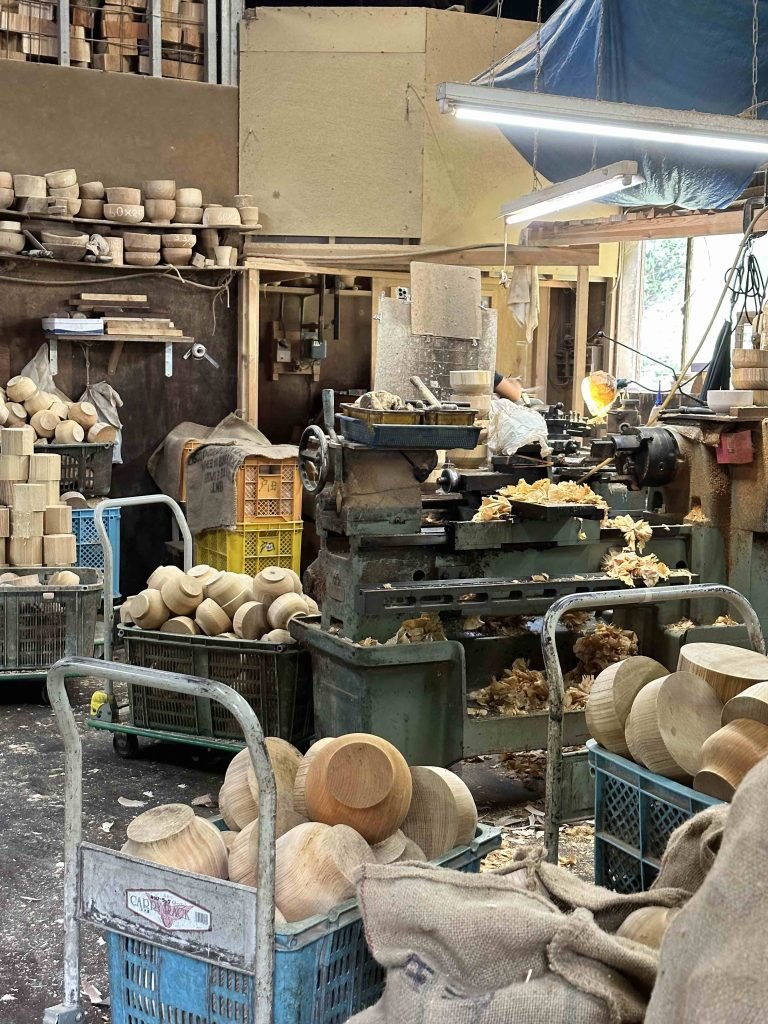
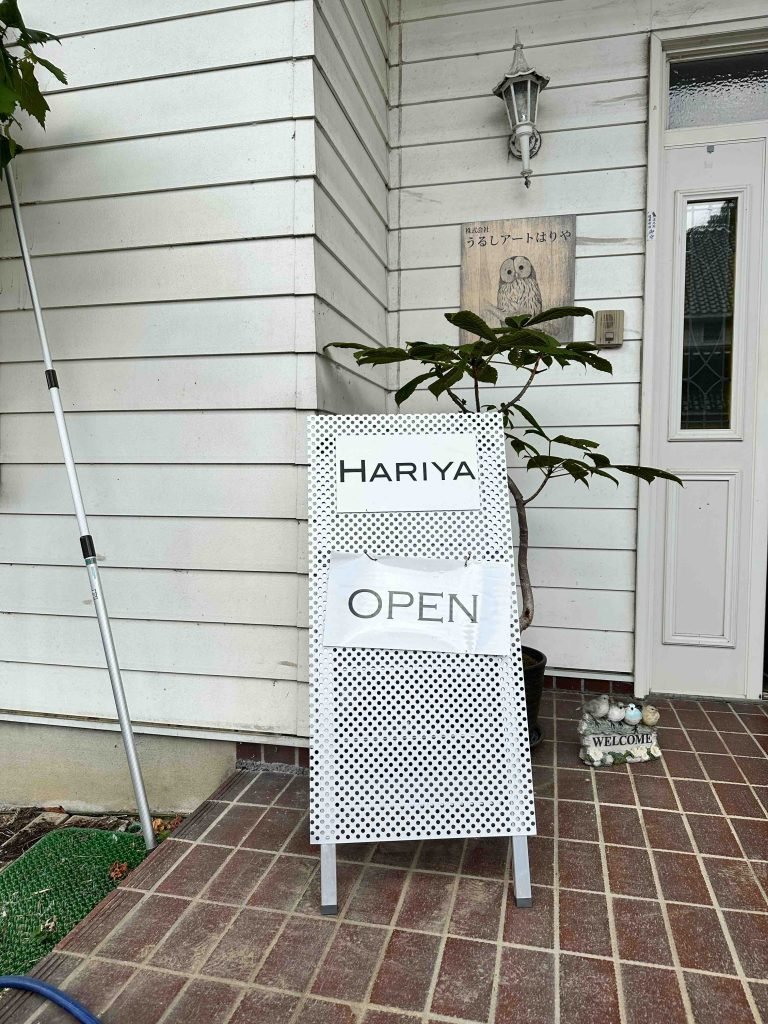
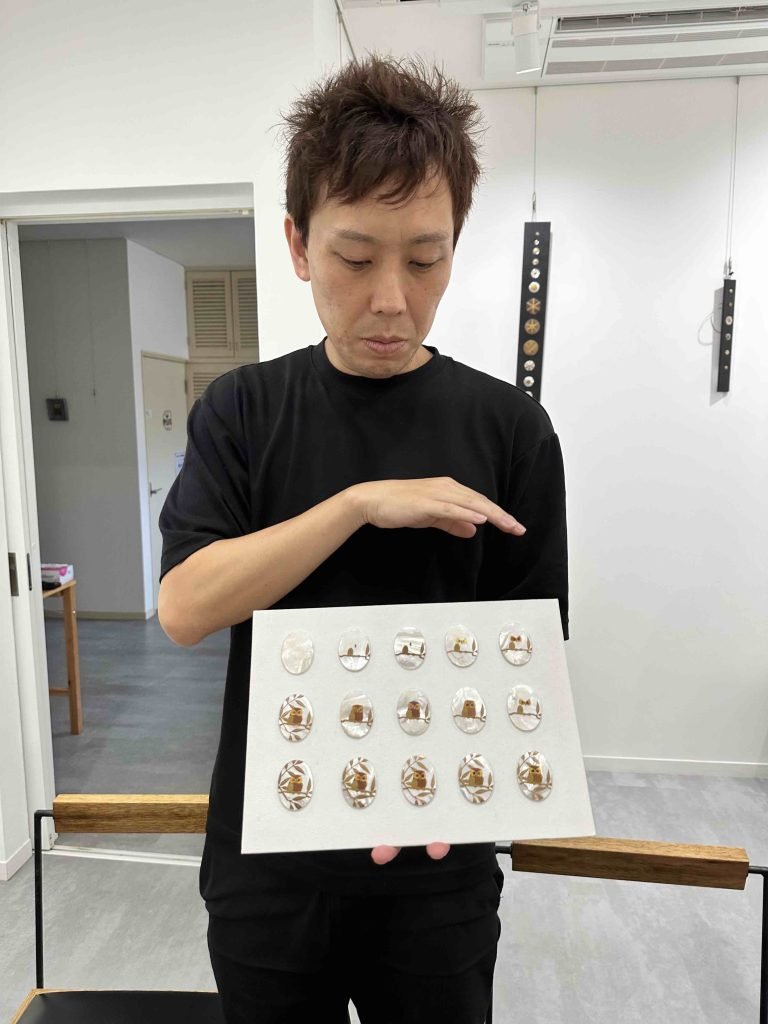
Eat:
- A traditional Japanese breakfast was had at the hotel.
- Lunch was enjoyed at a casual French restaurant called Enuma Station Bistro.
- A traditional Japanese dinner was hosted at the hotel.
Play/Chill:
Kahusenkei Kawadoko + Yamanaka Onsen is a main street that is lined with shops, local artisans and cafes. It is a short walk but a nice way to spend an afternoon. I soaked my feet in a public hot spring in the square. It was a perfect way to end your day.
I engaged in a Craftour that featured visits to local artisans from traditional (and modern production) of lacquerware to a family of artists specializing in the fine art of gold inlay in jewellery and pens.
Stay:
Mori no Sumika Resort & Spa, a modern luxury onsen ryokan in Yamashiro Onsen, Japan, offers a serene and picturesque retreat that skillfully combines contemporary amenities with the traditional charm of a Japanese ryokan. Nestled amidst verdant forests, it features beautifully manicured Japanese gardens, soothing indoor and outdoor hot springs, and private rooms overlooking the lush greenery. The resort’s enchanting night-time illumination of gardens and bamboo groves adds a mystical touch to the experience. While it provides an idyllic escape, guests should be mindful of its many steps and hillside construction. Emphasizing relaxation within a traditional onsen Ryokan ambiance, Mori no Sumika is a perfect destination for those seeking a peaceful and authentic Japanese experience.
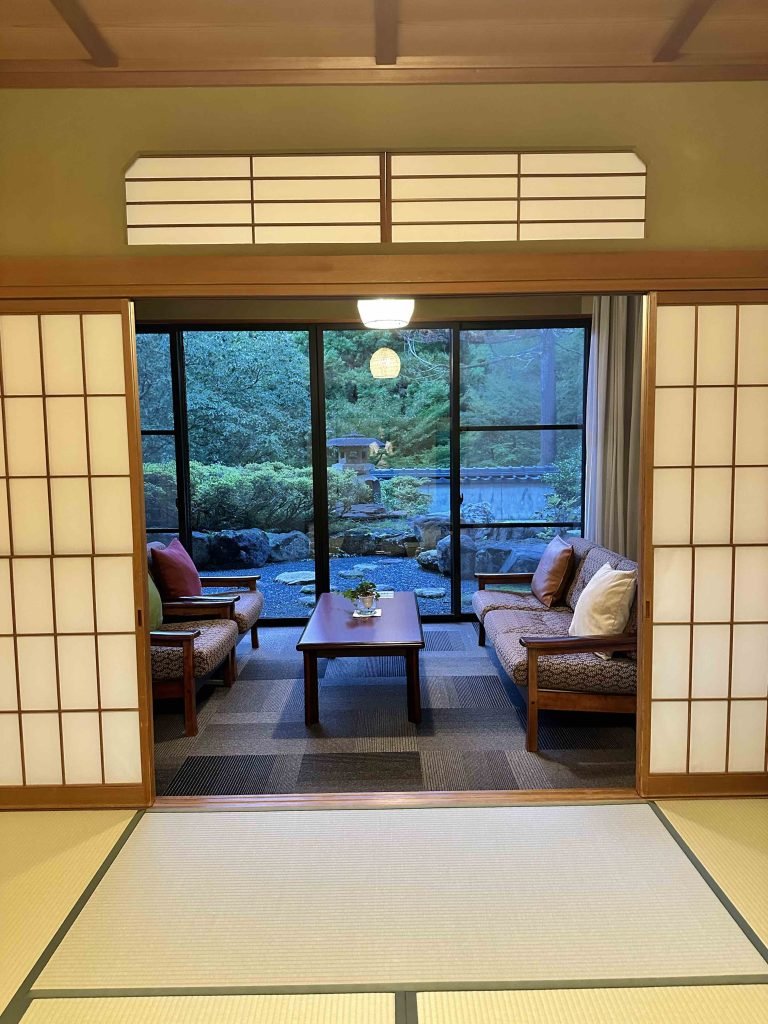
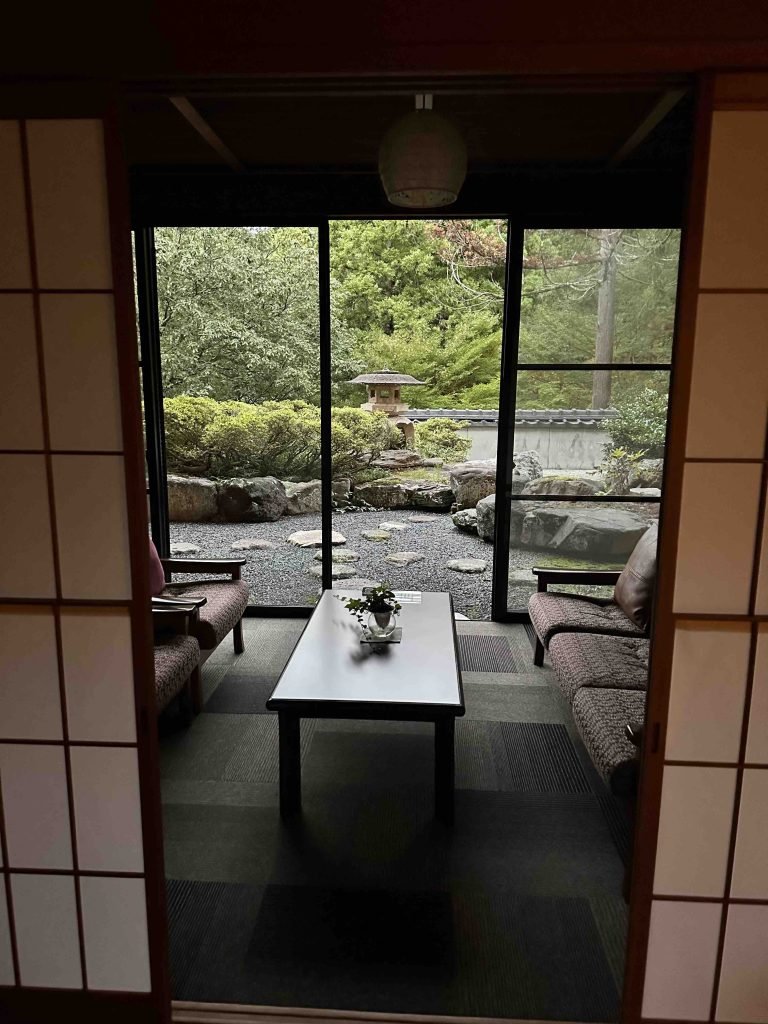
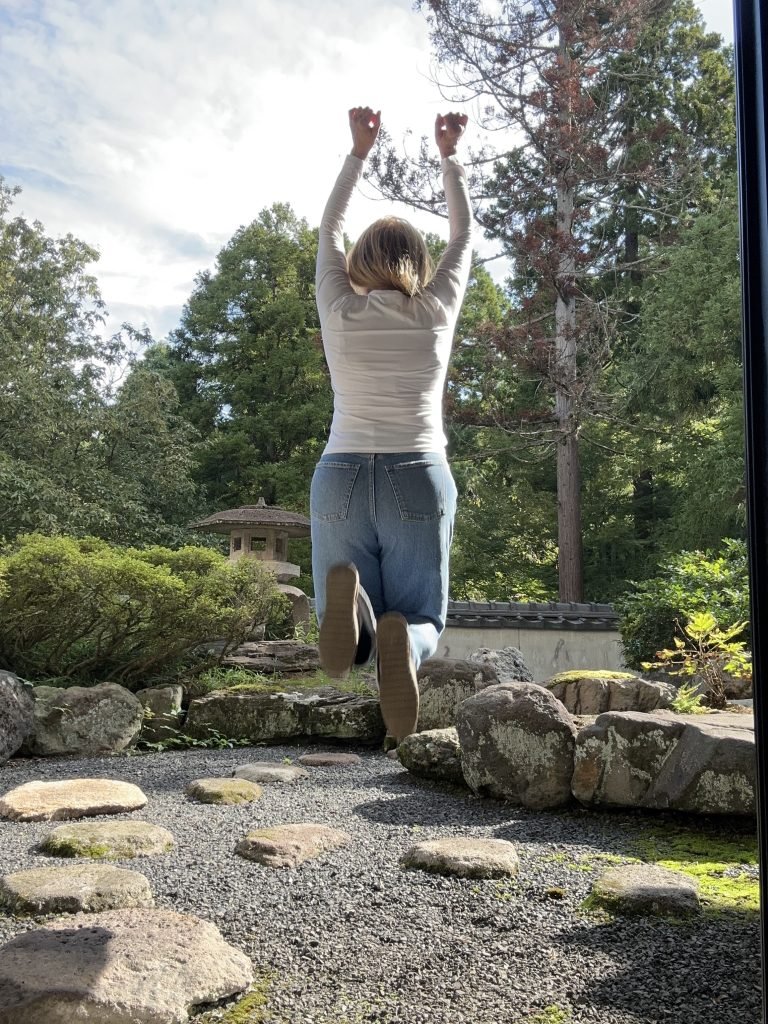
Day Six: Kaga
After a hearty breakfast at the hotel, I spent my last day in a calm and serene setting before my flight to Okinawa. As I mentioned earlier, when travelling the Ishikawa Prefecture, the Natadera Temple is a must-see. You can feel your body relax and help you reset for your next adventure.
Natadera Temple, located in Ishikawa Prefecture, Japan, is a site steeped in history and spiritual significance, revered for over 2,000 years. It is renowned for its striking natural rock formations, cliffs, and caves formed by volcanic eruptions and ocean currents. The temple is nestled amidst mossy forests, traditional Japanese gardens, and carp-filled ponds, earning it recognition in the Michelin Green Guide.
The caves at Natadera were once considered sites of reincarnation by followers of the Hakusan faith. The temple was founded by the monk Taicho in 717, inspired by a vision of Kannon, the Buddhist bodhisattva of mercy, during his meditation on Mt. Hakusan. Natadera Temple, primarily a Buddhist temple, enshrines Kannon and embodies a harmonious blend of Buddhism, Hakusan mountain worship, Shinto, and nature worship. The temple’s architecture incorporates elements from these different faiths, including Shinto torii gates.
The temple’s wooden halls and pagodas feature intricate carvings of Chinese zodiac animals, peonies, and chrysanthemums. Its main hall, the kondo, is used for most Buddhist services and houses a notable 7.8-meter-tall statue of Kannon, surrounded by local Kutani porcelain tiles.
The next stop was the Komatsu Airport, where I enjoyed a light lunch at the airport restaurant before my 2.5-hour flight to Okinawa.
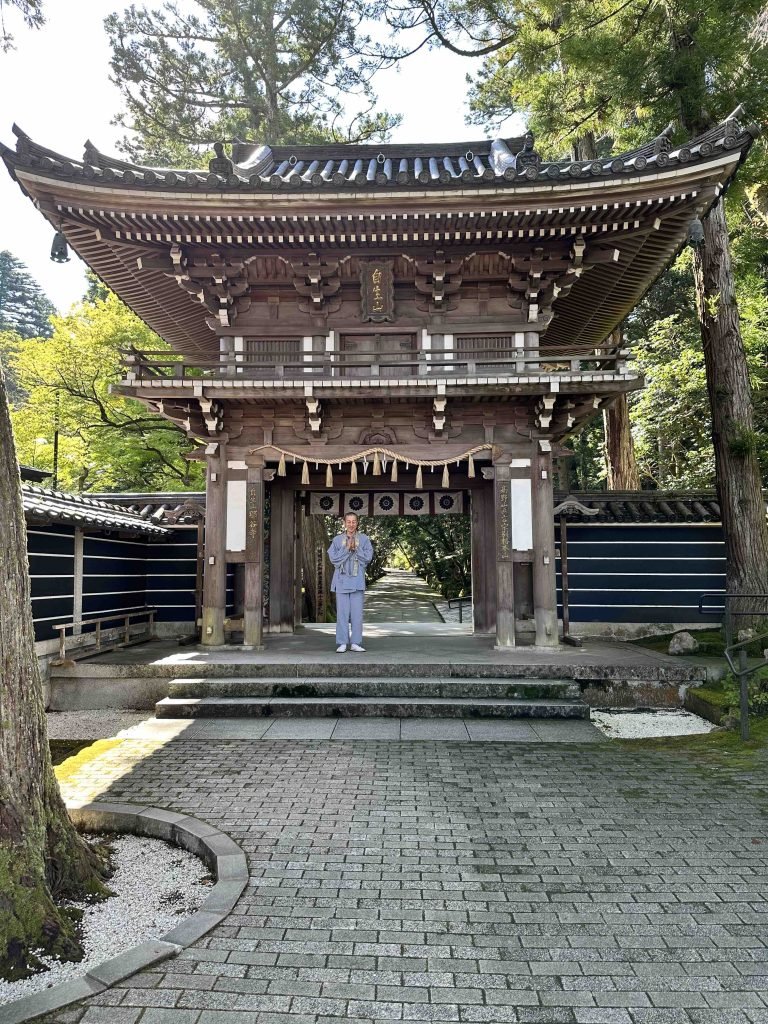
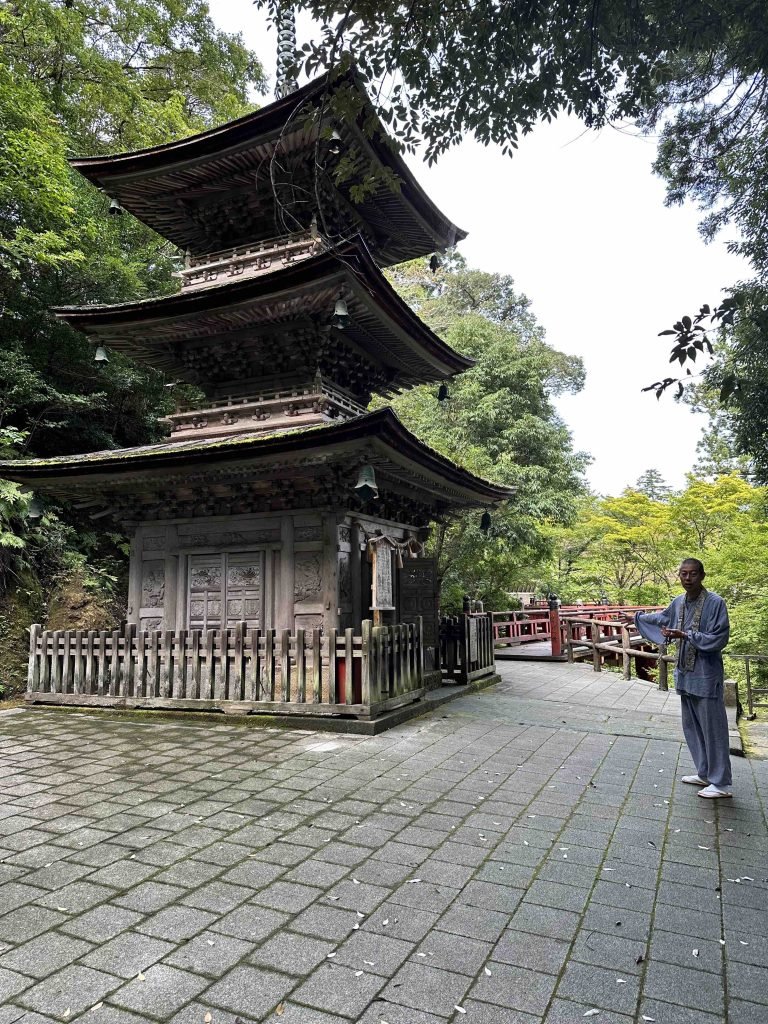
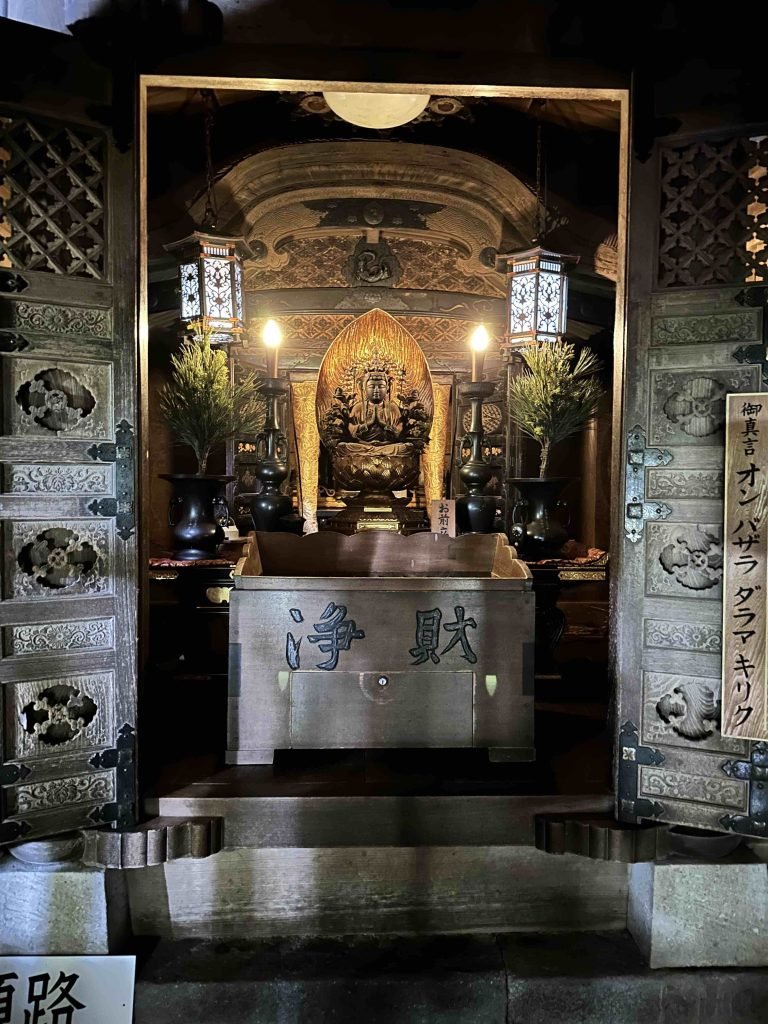
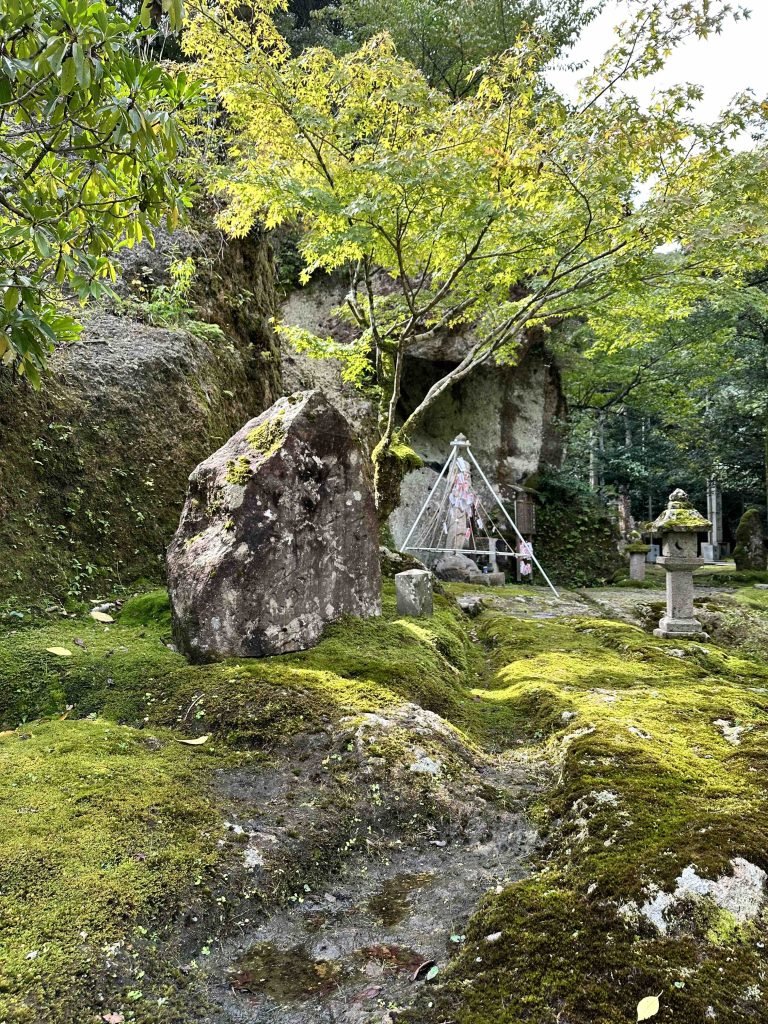
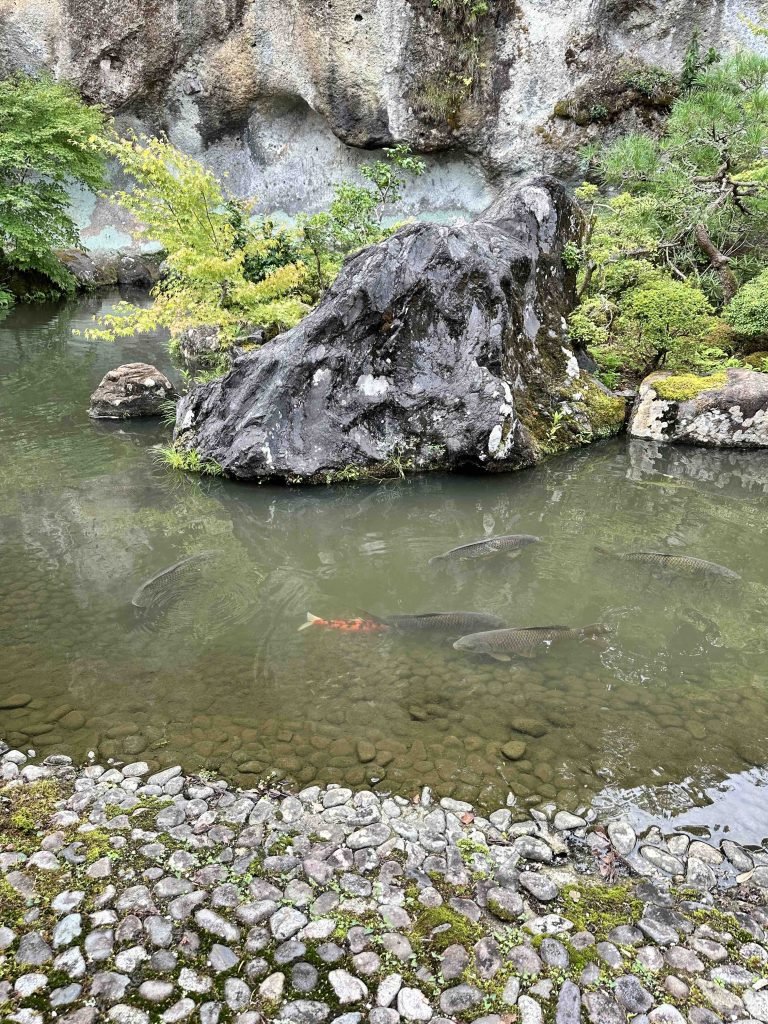
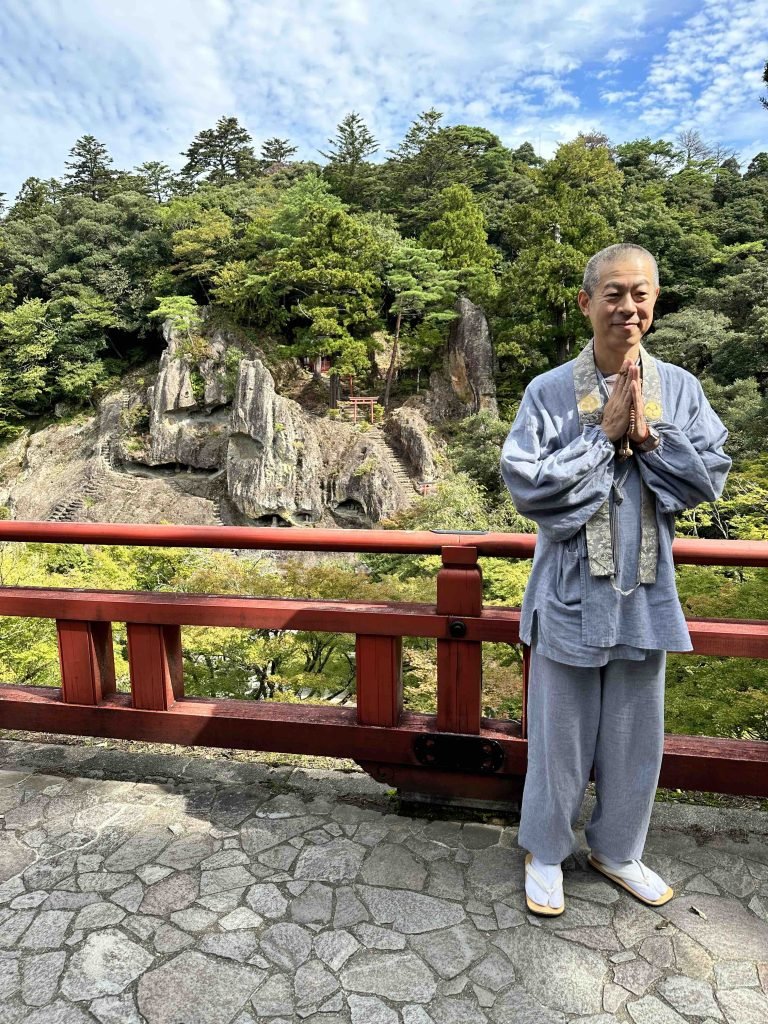
Next Steps:
If you are interested in replicating my trip or want more information to help plan your visit to the Ishikawa Prefecture, contact the experiences team at Beauty of Japan.


